February 2024 News
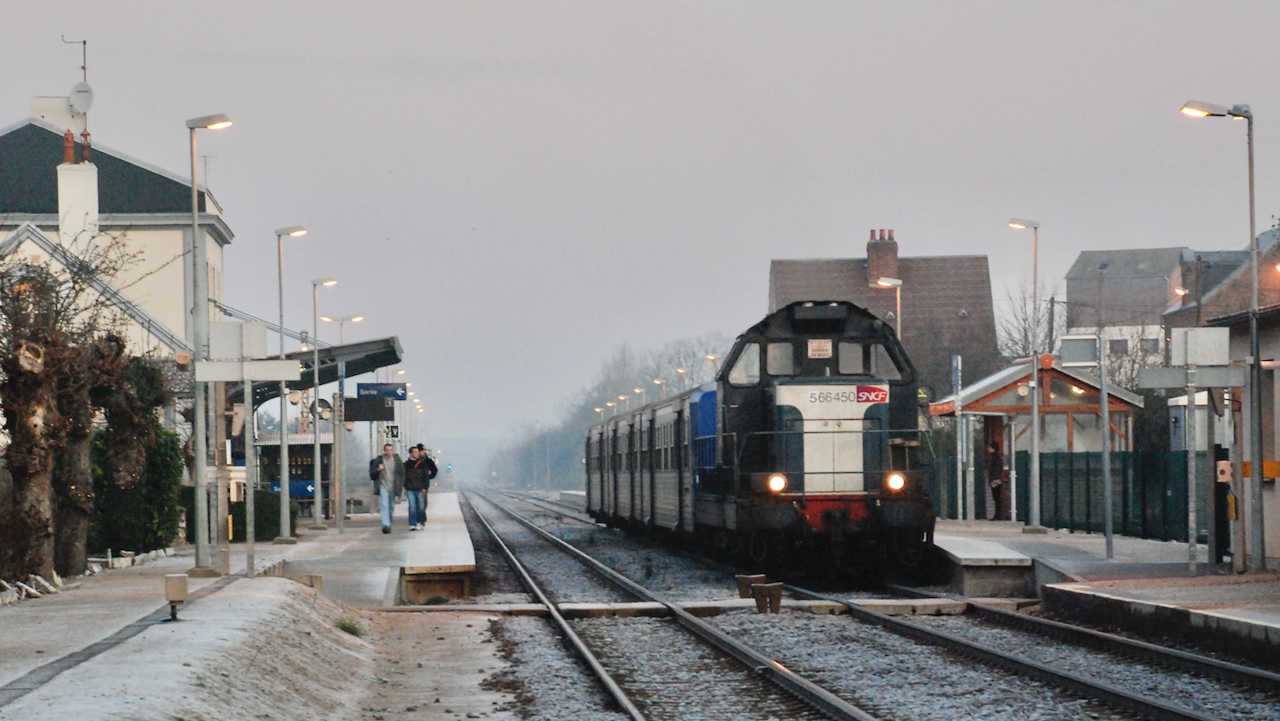
At Rue on a freezing cold 30th December 2008 a handful of passengers walk down to the crossing where BB 66450 and a three-coach RRR set wait to depart with the 09.00 stopping service to Amiens. Its day had started with the 06.38 Tergnier – Amiens, where after a short break it worked the all stations service to Rue, at that time the northern border of Picardie TER. Its arrival at Rue, and a similar service in the evening, justified having two members of staff on both the early and late shifts. While one reset the Lartigue repeater and controlled movements from the signalling equipment visible on the platform, the other boarded with a key and the train trundled a couple of hundred metres down to the crossover. Here the manual points were unlocked and changed, allowing BB 66450 to cross to the Up line. The points were re-locked and the train ran back to the station to form the return stopping service to Amiens. At just before 09.00 the crossing barriers came down and while the 07.00 Paris – Boulogne rushed through, BB 66450 eased out on its return to Amiens. Upon arrival at Amiens, the RRR set was parked in the sidings next to the Sernam building to await the evening rush-hour.
Back at Rue, the two staff members have a Paris – Boulogne express each way, and a handful of freights to signal before the mid-day Calais – Amiens semi-fast calls and they can hand over to the afternoon shift. A couple of years later, the Lartigue manual signals were replaced by automatic block, relieving the staff at stations between Abbeville and Boulogne of their signalling duties. Sadly the screens in the offices which gave details of the daily freight train schedules and locomotive-type allocated were also removed. Fusion of the régions in 2016 saw the end of Picardie TER services only running to Rue and NPdC services to Rang-de-Fliers, with the introduction of through stopping services between Abbeville and Boulogne.
LGV Picardie link
Construction starts shortly on the Roissy-Picardie interconnection between the Nord-Est LGV north of Roissy-Aéroport-CDG and the Paris – Amiens classic line, designed to improve access to the airport from northern France, enhance air-rail connectivity and extend the range of services provided at CDG2 TGV station. The 6.5km double track laid out for 160km/h running has three flying junctions, five rail and two road overbridges as well as four underpasses for agricultural vehicles and 11 passages for wild animals.
Associated works include a fifth track and platform at CDG2 TGV for trains from the Amiens direction, while Survilliers-Fosses station on the classic route will have extra platforms and a new footbridge for interchange with RER Line D trains. Signalling on both classic and LGV lines will be upgraded to accommodate the new route, and capacity of the substation at Gonesse increased.
The line is expected to almost halve the current journey time between Amiens and CDG Airport, and link the centre of Amiens to the LGV network without the need to travel to the isolated Haute Picardie TGV station.
In a later stage, if traffic growth demands extra capacity, the four-track section between the interconnection junction at Marly-la-Ville and Survilliers-Fosses (2km) would be widened to six tracks, while at the next station north, Chantilly-Gouvieux, a fourth platform track would be built.
Design-and-build contractor for the €60 million project is the NGE/Egis consortium. On completion in mid-2026 big reductions will be possible in journey time to the airport from stations to the north, for example Amiens cut from 1h 50 to 1h 02, Creil 1h 10 to 22min; travel time from local stations on Line E will also be dramatically faster, Survilliers to CDG in 7min compared with 45min currently.
Map: SNCF Réseau.
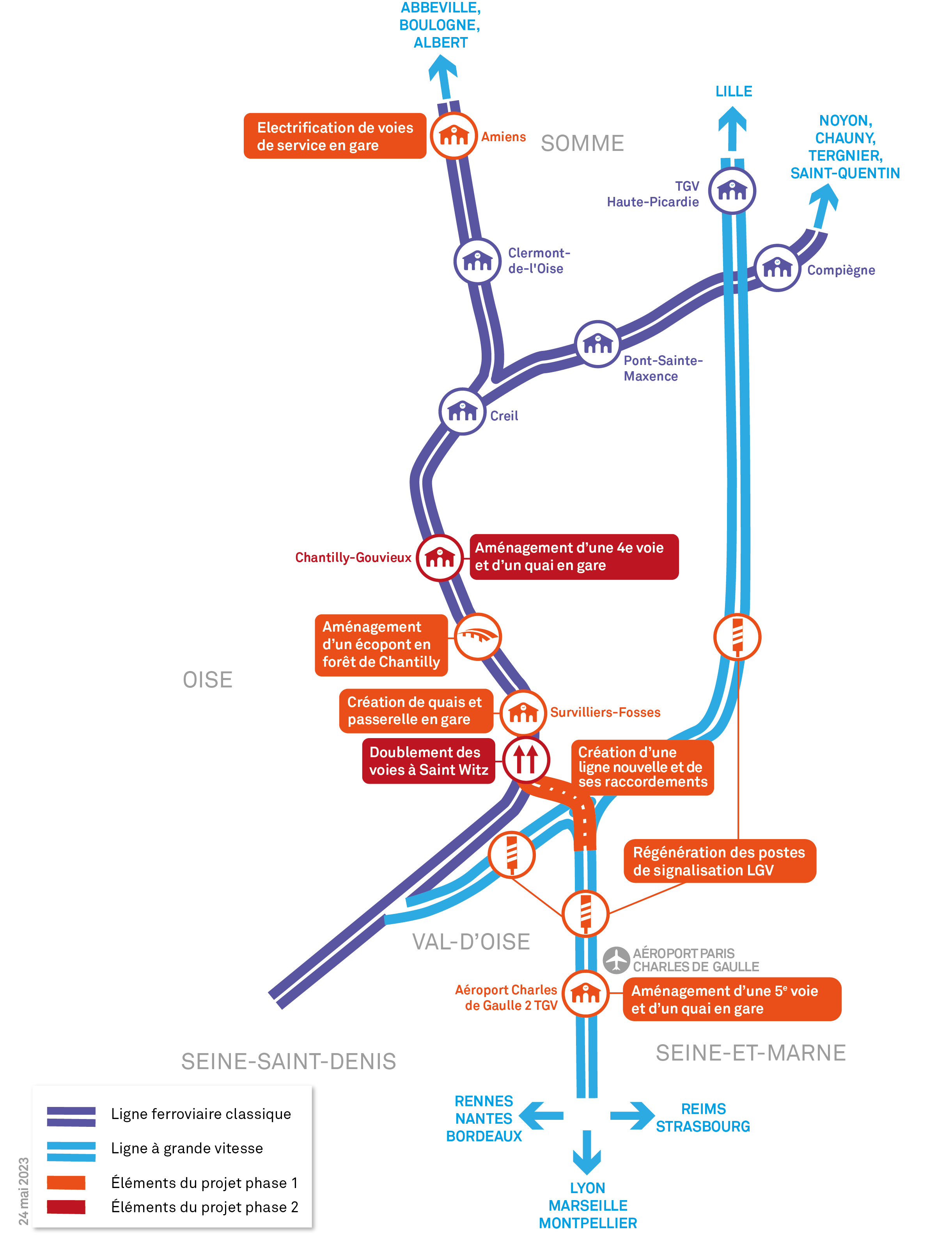
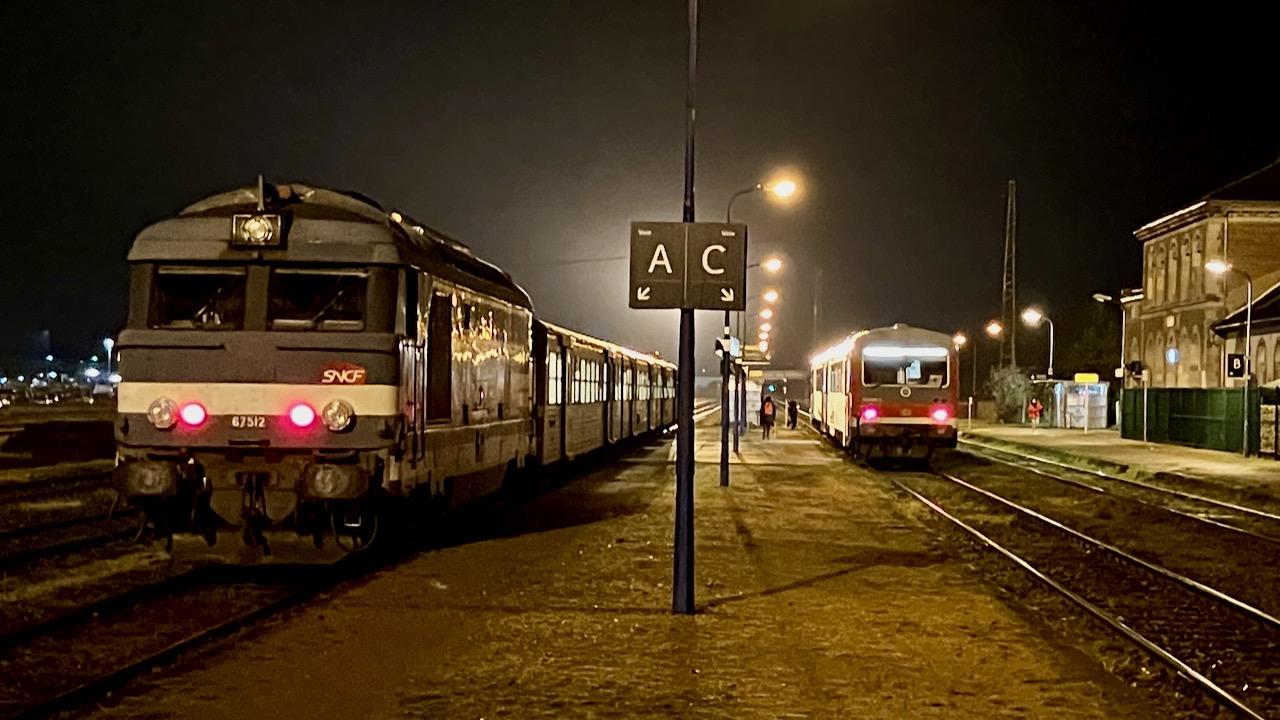
Grand East renews with SNCF and announces major investment
The new contract with SNCF will see services opened up to competition during its duration, although SNCF will retain responsibility for ticket sales and customer information. Passenger revenue will be paid direct to the région, with SNCF reimbursed based on operating costs including inputs such as electricity. Stricter punctuality standards will require trains to run within no more than 3min of scheduled times instead of the previous 6min, with penalty ceilings increased tenfold. To improve the rolling stock position, Grand Est will make €10 million available immediately to purchase surplus rolling stock from other régions and improve maintenance turnround times.
The move comes just a year after the disastrous launch of Reme (Réseau express métropolitain européen), the RER network based on Strasbourg. This promised an extra 1,000 trains a week, with improved frequency on major routes and more services running through rather than terminating at Strasbourg. This ambition has now been cut back to an additional 650 trains a week due to a shortage of rolling stock, train crews and maintenance staff. Even with rolling stock transferred in from other parts of the region, 11% of trains were more than 10min late or cancelled in 2023. Nevertheless it does demonstrate the région's commitment to public transport and its determination to improve rail services in particular. The number of weekday services has risen from 1,530 in 2016 to 1,891 in 2023, including the Strasbourg – Bâle TER 200 service now half-hourly, better even-interval service from Strasbourg to Nancy and Metz, and more trains on Line 4 (Paris – Troyes – Belfort) and Reims – Charleville-Mézières.
The main aim now is to improve service quality and reliability, by expanding the rolling stock fleet, replacing the Class BB 26000s and Corail stock, and Classes BB 22200/67400 and RRR stock, all between 35 and 50 years old. The région will spend €1 billion on new rolling stock by 2034, and will not plan for further increased service levels before 2026. To enable TERs to run through Strasbourg gare rather than the majority terminating there (only the Selestat – Saverne stopping service runs through at present), the track layout is undergoing major alteration. In the current phase of work, most TER departures are being replaced by buses between 21.30 and 05.00 until 24th February while track renewal takes place.
The State/Région Contract-Plan has allocated €90 million for modernisation of three Vosges cross-country routes: Saint-Dié-des-Vosges to Arches/Épinal (€17.1 million), Saint-Dié to Molsheim (€50 million), and Épinal to Bains-les-Bains on the line to Belfort (€24.4 million). The first two will be 100% funded by Grand Est, while the latter will receive a 20% contribution from Bourgogne Franche-Comté région. This funds part of Grand Est’s plan for improvements to 14 rural routes and branch lines where service is suffering from years of neglect (see December News).
The State/Région Contract-Plan has allocated €90 million for modernisation of three Vosges cross-country routes: Saint-Dié-des-Vosges to Arches/Épinal (€17.1 million), Saint-Dié to Molsheim (€50 million), and Épinal to Bains-les-Bains on the line to Belfort (€24.4 million). The first two will be 100% funded by Grand Est, while the latter will receive a 20% contribution from Bourgogne Franche-Comté région. This funds part of Grand Est’s plan for improvements to 14 rural routes and branch lines where service is suffering from years of neglect (see December News).
Bridges and tunnels will be renovated, drainage channels cleaned and augmented where necessary, and sleepers, rail and ballast replaced. All three lines will have remedial work carried out during 2024 to remove the most severe speed restrictions, costed at around €18 million. On the Molsheim route, the work will complement last year’s upgrade of the 25km between Saint-Dié and Saâles.
Above. At Lauterbourg on the 8th December BB 67512 has arrived at the German border with the 16.20 from Strasbourg and waits to return with the 17.41 service. On Platform C a DB DMU has just arrived with the connecting 17.19 from Woerth Rhein.
Lauterbourg is typical of Grand Est's neglected rural routes. No Strail rubberised track crossings or 55cm high tactile edged platforms here (equivalent to door height of modern rolling stock); just compressed grit at track level.
Opposite. Lauterbourg's neglect has resulted in the retention of a splendid array of German semaphore signals at the north end of the station.
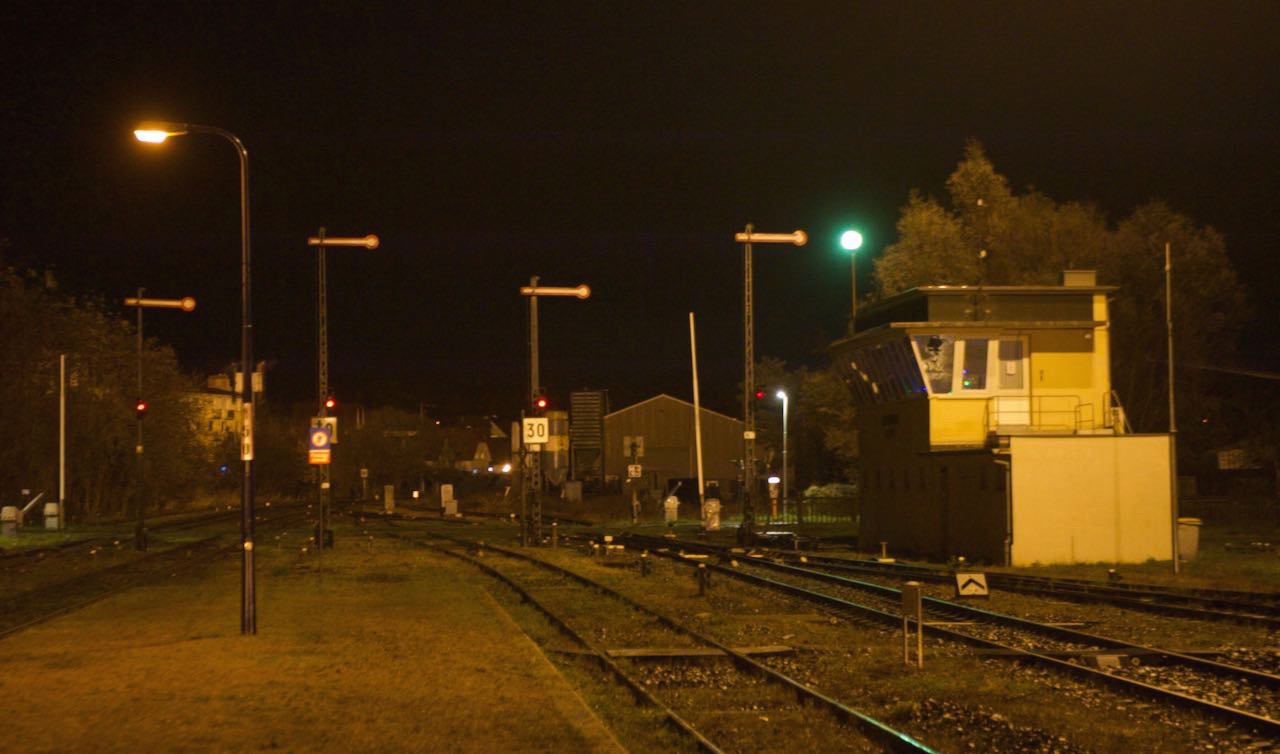
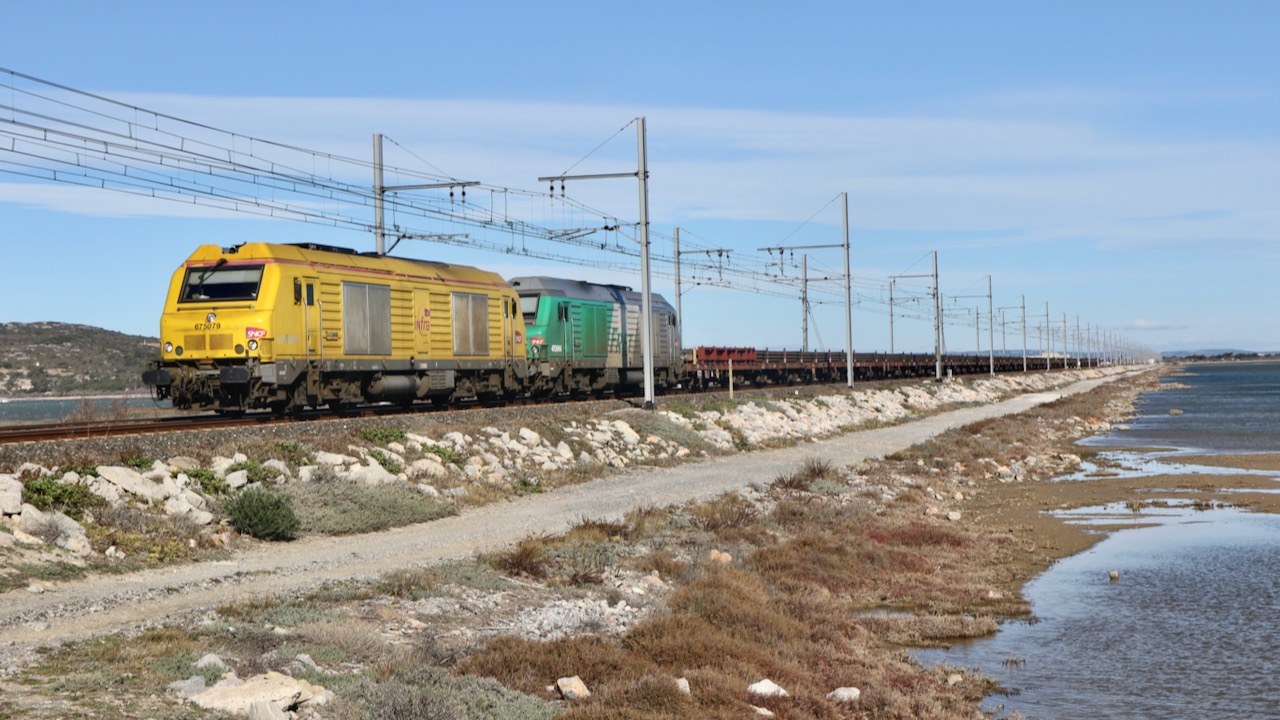
BB 75079+75066 run beside the Etang de Leucate on the 24th January with a train of rail from Saulon to Rivesaltes. Photo: Georges Turpin.
Métropolitain RER law
The framework under which RER networks are to be developed in regional cities was passed into law by both chambers of parliament in mid-December. President Macron announced his support for Services express régionaux métropolitains (SERM) for 10 cities in 2022, proposals which now encompass up to 25 city-regions. The law gives legal standing to the expanded mission of Société du Grand Paris, renamed Société des Grands Projets, which is to have overall responsibility for SERM projects over the coming decade.
State funding of €767 million is being provided to kick-start the most advanced projects, broken down within the framework of the State/Région Contract-Plans for 2021-27 currently being revised. Total investment is estimated at up to €20 billion. SGP will be the prime authority for building new infrastructure and capacity, while SNCF Réseau will retain its role of improving and maintaining existing networks to cope with substantially increased service levels.
Cities involved are: Aix-Marseille-Toulon, Bayonne-Basque (Basco-Landais), Bordeaux, Grenoble-Chambéry, Lille, Lyon-Saint-Etienne, Metz-Nancy, Montpellier, Mulhouse-Bâle, Nantes, Nice, Rennes, Rouen, Strasbourg, Toulouse, Tours.
Other areas where projects for cross-city routes and substantially improved frequencies have been put forward for discussion are: Angers, Grand Avignon, Belfort-Montbéliard, Besançon, Brest, Sud-Bretagne, Clermont-Ferrand, Dijon, La Rochelle, Le Mans, Limoges, Pau-Tarbes-Lourdes, and Reims.
Quick off the mark to launch Toulouse’s project, Occitanie’s president Carole Delga met with Toulouse Métropole and other local authorities on 24th January to agree common aims, the first of several steps necessary before submission of funding bids in mid-year. A new map showing the network proposed for completion by 2040 envisages a 10-minute peak-hour service on all five routes.
Quick off the mark to launch Toulouse’s project, Occitanie’s president Carole Delga met with Toulouse Métropole and other local authorities on 24th January to agree common aims, the first of several steps necessary before submission of funding bids in mid-year. A new map showing the network proposed for completion by 2040 envisages a 10-minute peak-hour service on all five routes.
Map: Occitanie Région.
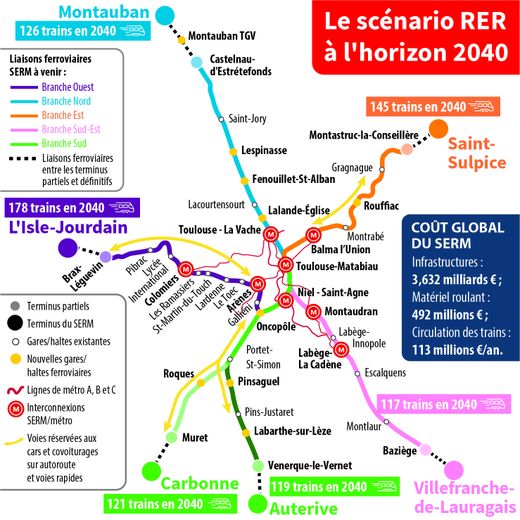
Normandie Omnéo 2s
The introduction of the second-generation Alstom Omnéos will also cause the demise of the remaining BB 15000 operated push-pull services
Photo: 76actu/Yann Rivallan.
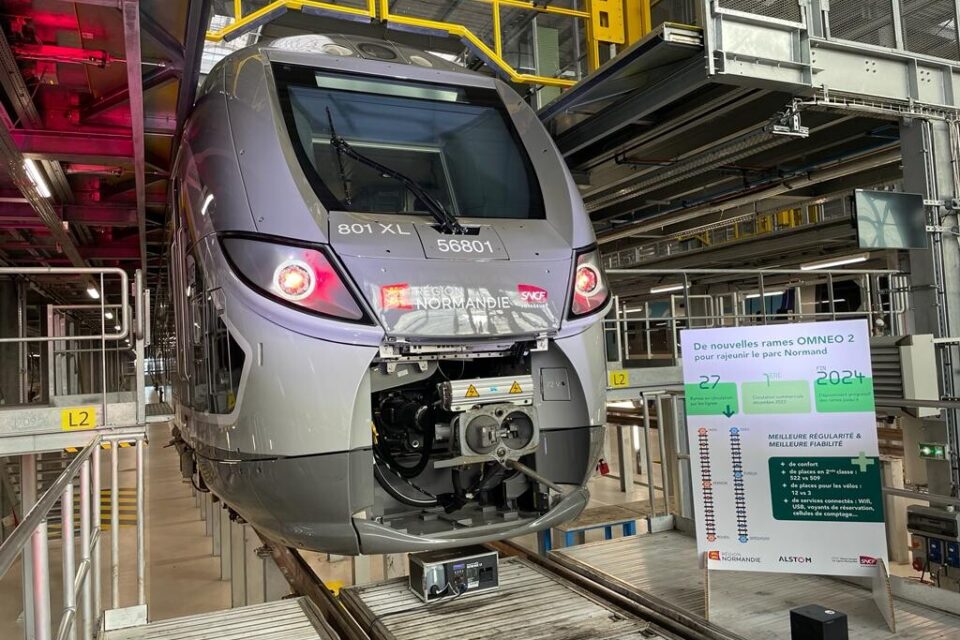
PACA funding favours rail
Finance for transport amounting to €1.5 billion for the period through to 2027 was approved in the Région Sud Provence-Alpes-Côte-d’Azur State/Région Contract-Plan signed on 1st December, €644 million (44%) of which is earmarked for rail. The principal features are:
- €162 million for studies and development of Services Express Régionaux Métropolitain (SERM) in the Aix-Marseille, Nice, Toulon and Avignon agglomerations within the framework set out under the new law relating to SERM networks (see separate News item above).
- €278 million for modernisation and regeneration of routes serving the Alpes du Sud, the so-called Etoile de Veynes lines to Grenoble, Briançon, Aix and Valence which are vital to PACA’s bid to host the 2030 Winter Olympics, as well as the Nice – Breil and Cuneo – Vintimille lines.
- €50 million for accessibility works at seven stations, plus €17 million for interchanges with local transport, car and cycle parking.
- €100 million to develop local and long-distance freight terminals, including a regional intermodal hub, completion of upgrading at Miramas yard and improved rail access to the port of Marseille where a disused line into the Grand Port is to be reopened by 2026.
- €50 million for battery-train development and recharging facilities.
Although passenger reopening projects are excluded from Contract-Plan agreements, the €100 million allocated to Marseille’s SERM includes funding for studies into provision of public service over the 25km Rognac – Aix freight line. This would give Aix a direct rail connection to Vitrolles Aéroport Marseille-Provence as well as opening up the possibility of an out-and-back SERM loop service from Marseille Saint-Charles.
Etoile de Veynes funding
Grenoble – Veynes in particular has been causing concern amongst passenger groups despite closure for major works during 2022. A run of poor service since last summer saw 40 cancellations over a 52-day period, with another 39 trains curtailed or severely delayed.
Provision of single cars on peak-hour services out of Grenoble is a frequent occurrence due to maintenance problems, causing overcrowding, whilst the summit section at Lus-la-Croix-Haute is subject to speed restrictions due to the poor state of the track. Cost of remedial work here is put at €90 million.
An immediate benefit will come with relocation this summer of the halt at Pont-de-Claix in suburban Grenoble, financed from local sources. The new single platform, 1.2km north of the existing site, will be adjacent to the Pont-de-Claix l’Etoile multimodal interchange with tram Route A, car parking, cycle and pedestrian routes.
Site of the new halt at Pont-de-Claix, scheduled to open later this year.
Site of the new halt at Pont-de-Claix, scheduled to open later this year.
Photo: RailduSud.
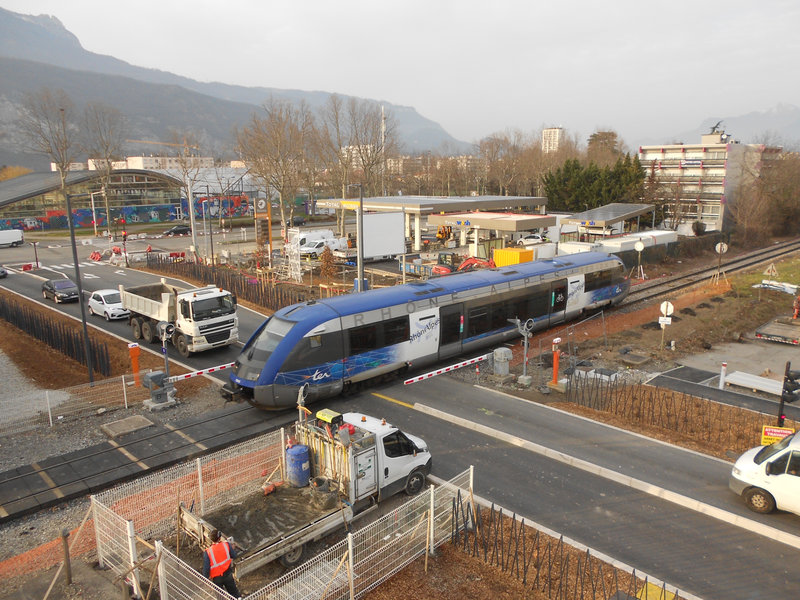
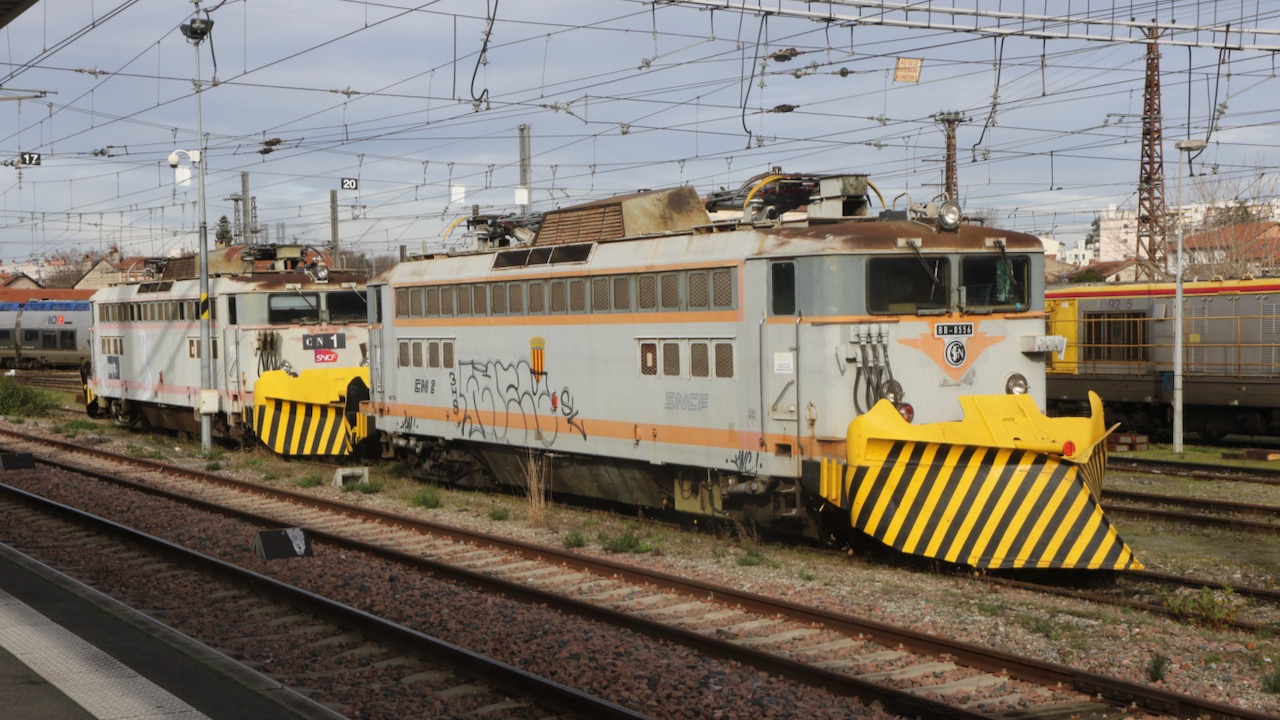
Farewell BB 8500s
The last two surviving BB 8500s CN 1/2 (formerly BB 8553/8556) retained at Toulouse for snowplough duties appear to have been retired. On the 7th January BB 7248 was despatched to Latour-de-Carol with a wagon chasse neige at either end while the BB 8500s remained at Toulouse.
The pair are seen at Toulouse on the 18th January, the photo opposite showing the detailed differences in the chasse neige.
Photos: Georges Turpin
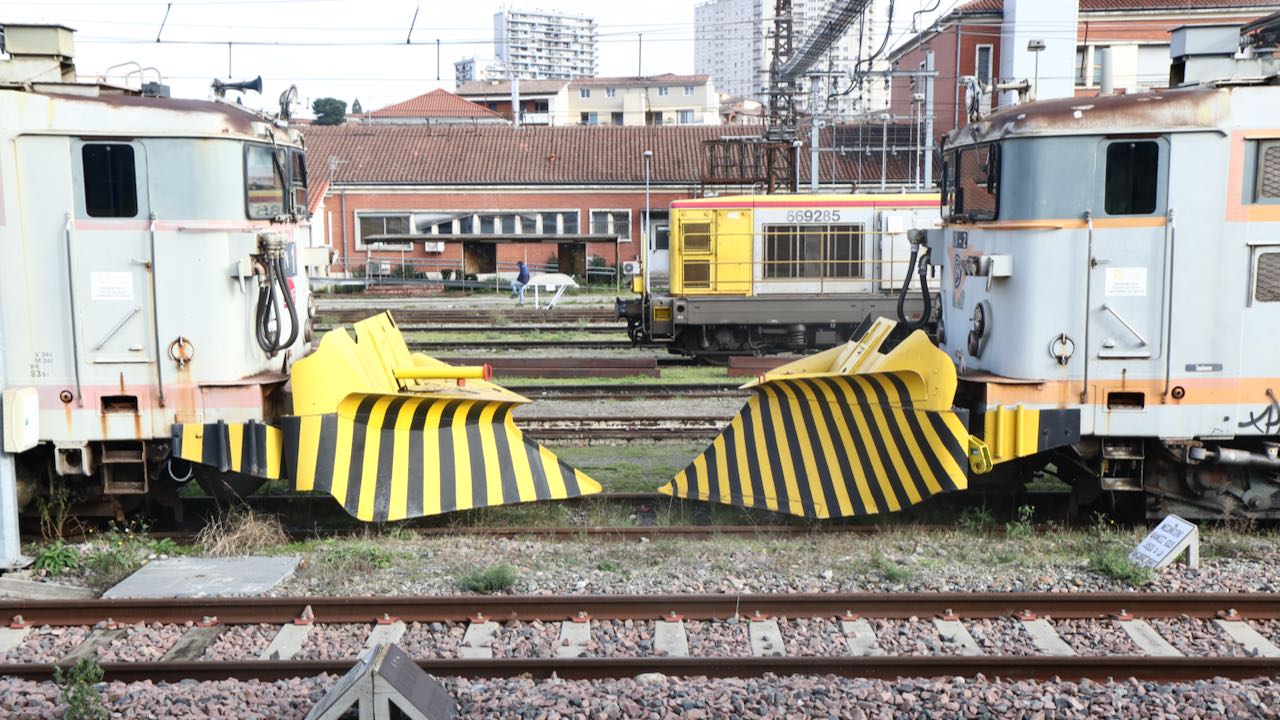
Hendaye – Dax half-hourly
Nouvelle-Aquitaine région has approved the first stage of RER Basco-Landais which should see trains running every half-hour between Hendaye and Dax (87km) by 2026. Meeting on 12th December, the regional council voted unanimously in favour of improvements which by 2032 will establish frequent services on routes radiating from Bayonne to Dax, Pau, Saint-Jean-Pied-de-Port and across the Spanish border to San Sebastian.
Over the next two years, existing resources will be utilised to their maximum to augment the current timetable, though pressure on rolling stock throughout Nouvelle-Aquitaine limits what might be achieved. At the same time, detailed studies will be made into future infrastructure provision necessary to fit the main line half-hourly service into a timetable already busy with TERs, TGVs and freight trains. Currently, there are around 12 daily TERs between Bayonne and Dax, less-busy stations having a midday gap of between 2 and 5 hours between trains. Orders for additional rolling stock will be placed for introduction between 2027 and 2032. Infrastructure work at Hendaye to permit through running along the coast to San Sebastian, costed at €42 million, is unlikely to be completed until after 2032.
From 10th January, an all-modes ticket Txik Txak + TER was introduced for travel on TER Line 54 from Bayonne to Saint-Jean-Pied-de-Port as well as parallel bus routes and the Bayonne urban network.
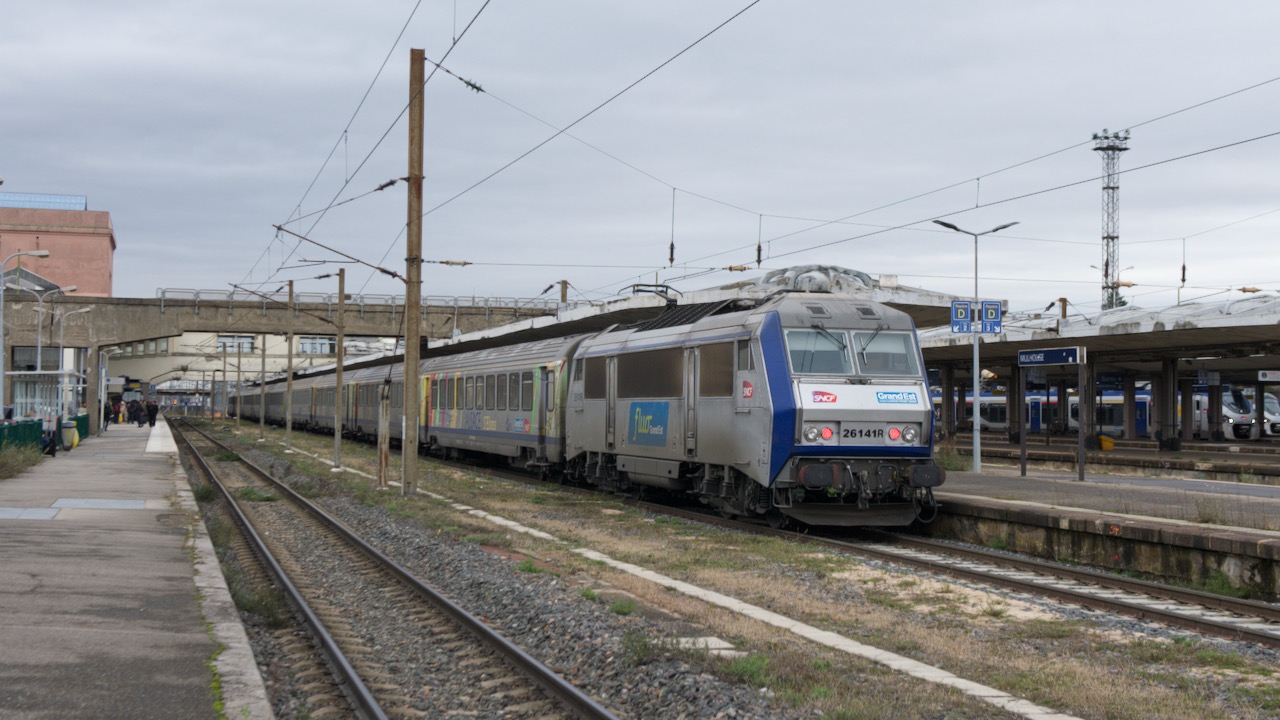
Neglect of the striking 1927 concrete station building and canopies at Mulhouse has been highlighted by a local conservation group which is trying to stop demolition of one of the footbridges. Damage due to weather and water ingress has gone untreated for many years, falling debris being a frequent occurrence. Above. On 5th December BB 26141 stands under the threatened footbridge with the 12:21 Bâle – Strasbourg. A difficult day for the TER 200 services, as a couple of failures that morning had resulted in the 11:51 Bâle – Strasbourg being cancelled. Upon arrival at Mulhouse the following 12:21 Bâle – Strasbourg was terminated with passengers having to wait for the 12:51 Bâle – Strasbourg, being part of a Nancy diagram it was only formed of six coaches and heavily overcrowded.
Brittany Ferries’ wagons delivered
Mid-December saw delivery of the first 22 Modalohr New double-pocket piggyback wagons ordered for Brittany Ferries’ Cherbourg – Bayonne rolling motorway service which will carry lorries in transit between Ireland, the UK and Spain. A further 25 will follow in May to make up two 21-wagon trains with five spares. Starting later this year, the service will run daily, leaving Cherbourg at 19.20 arriving Bayonne-Mouguerre at 11.56, returning at 19.26 for 11.08 arrival in Cherbourg. With each train capable of carrying 42 lorries, there is capacity for transfer to rail of up to 25,000 road journeys annually.
Development work at the terminal in the port of Cherbourg started last September, with rail alterations and connections scheduled for completion in April. SNCF Réseau has carried out tunnel clearance work on the train’s initial route via Niort and Saintes. In 2026 the train will transfer to the Poitiers – Bordeaux classic line and will be electrically-hauled throughout. At Mouguerre, 10,000m2 of additional land has been acquired to provide space for the piggyback trains. In December, the EC authorised a subvention from the French government under state-aid rules of €19 million towards the cost of extending the Mouguerre hub to accommodate Brittany Ferries’ traffic. The entire project is costed at more than €40 million. Photos: Lohr/Brittany Ferries.
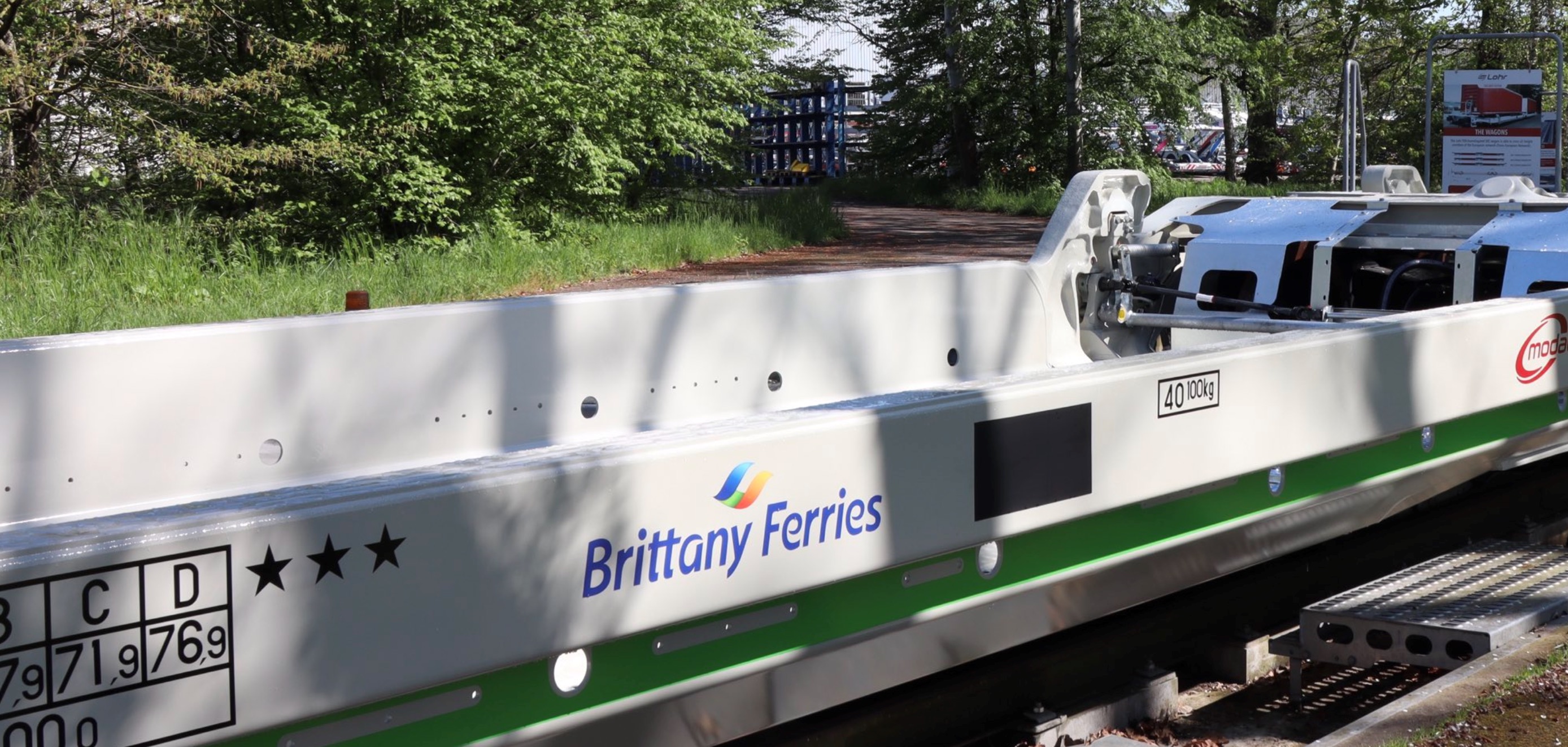

Aurillac night train ‘stillborn’
The BB 75300s are a sub-class of 10 locomotives converted in 2015 from BB 75000s to replace BB 67400s on overnight trains, and are equipped with electric train-heating and intercom. Maintenance is undertaken at either Avignon or Longueau. At the time only two were needed for the Briançon sleeper as they were out of gauge on the Rodez line. The majority of them were therefore leased by Akiem to Lineas and other freight operators. After tunnel clearance work they have been able to operate on the Rodez line since the summer of 2021, although the overnight service has been a mix of BB 75300, BB 67400 or cancelled. Given the challenges that SNCF faced in finding locomotives to operate the Rodez/Albi service it is difficult to understand how it expected to operate the Aurillac service as well. The Rodez train was cancelled for much of early part of December following a locomotive failure at Albi. Thereafter for the remainder of December it seemed to be only able to operate either the Rodez or Aurillac train but not both.
Responding to the complaints, SNCF pointed out that 23 of the 28 trains scheduled up to 5th January had run, and with 60% occupancy the Aurillac train had made a good start. One of the Brive locos had been away for maintenance and its return delayed but normal service was restored as quickly as possible, SNCF said. Over the weekend of 5th January BB 67596 worked the Rodez service, with 'Isabel' liveried BB 67424 sent light engine from Villeneuve St Georges for the Aurillac.
Following significant adverse press and media coverage the position appears to have improved with seven BB 75300s now available for the overnight services including Lineas livered BB 75338, although a BB 67400 has also appeared. During the latter part of January the Rodez train was only cancelled southbound on the 14th and northbound on the 15th, while the northbound train was terminated between Orléans and Paris on the 20th due to an incident. From Monday 29th January until April, the Rodez train is replaced by a coach on Monday - Thursday due to engineering work, along with the last two southbound trains to Brive in the evening, and the first two northbound trains in the morning..
Tarbes train. The Paris – Tarbes train was not shown on SNCF Connect until a short time before the 10th December timetable change, and did not immediately transfer to the Bordeaux route. On 19th December it was terminated at Toulouse with forward connection by TER. In January it was still being advertised only on certain days, generally Mondays - Thursdays and often very late, now running via the classic route and Bordeaux but not serving Bayonne due to overnight engineering work. Operation over the LGV to Bordeaux is expected to start in mid February once acceptance testing is completed, although BB 22378 ran the first test on 22/23rd April 2023. Despite the irregular running, in the first weeks of operation 20% of trains ran full, ie with 400 passengers
New stock coming? As reported in a survey of European night trains in the January issue of Railway Gazette International, the government is preparing to call tenders for new rolling stock next year and is likely to set up a rolling stock leasing company to fund the order. The number and type of cars has yet to be decided, as has the motive power to haul them on non-electrified lines.
Up to 300 cars had been mooted to operate the 10-route network proposed for 2030 (see map in July 2023 News) but the aim initially will be to replace the current fleet of 129 refurbished Corail stock.
Tarbes train. The Paris – Tarbes train was not shown on SNCF Connect until a short time before the 10th December timetable change, and did not immediately transfer to the Bordeaux route. On 19th December it was terminated at Toulouse with forward connection by TER. In January it was still being advertised only on certain days, generally Mondays - Thursdays and often very late, now running via the classic route and Bordeaux but not serving Bayonne due to overnight engineering work. Operation over the LGV to Bordeaux is expected to start in mid February once acceptance testing is completed, although BB 22378 ran the first test on 22/23rd April 2023. Despite the irregular running, in the first weeks of operation 20% of trains ran full, ie with 400 passengers
New stock coming? As reported in a survey of European night trains in the January issue of Railway Gazette International, the government is preparing to call tenders for new rolling stock next year and is likely to set up a rolling stock leasing company to fund the order. The number and type of cars has yet to be decided, as has the motive power to haul them on non-electrified lines.
Up to 300 cars had been mooted to operate the 10-route network proposed for 2030 (see map in July 2023 News) but the aim initially will be to replace the current fleet of 129 refurbished Corail stock.
SNCF ‘golden age’
He referred in particular to the success of SNCF recruitment campaigns in the face of staff shortages throughout the public transport sector. Over 4,900 new staff joined SNCF Voyageurs last year, 1,900 of them in Île-de-France.
News in brief
TGV to Berlin. SNCF’s long-planned daily Paris – Berlin TGV will start with the December 2024 timetable change; journey time via Saarbrücken will be around 7h.
Ireland – France ticketing. Through train-plus-ferry tickets from stations in Ireland to French destinations will be introduced this summer, using Brittany Ferries and Irish Ferries services from Dublin and Cork to Roscoff and Cherbourg. Connections between port and rail terminals are to be improved in both countries.
More RENFE trains. With over 250,000 passengers carried on its Madrid/Barcelona to Lyon and Marseille trains in the first five months of operation (80% of capacity), RENFE plans to introduce a Paris – Lyon – Marseille service later this year. Seven trains daily will run Paris – Lyon in competition with SNCF and Trenitalia, two of which will be extended to Marseille. A typical mid-week Paris – Lyon fare will be €70 against SNCF’s €94.
Tarbes access. A year-long programme of works is underway at Tarbes where €10.7 million is being spent on raising platforms to standard height and installing three escalators from the subway to the platforms. Tactile strip, acoustic warning and better lighting will improve accessibility for persons of reduced mobility. The project is financed 45% by the State and 55% by SNCF Gares & Connexions.
Ireland – France ticketing. Through train-plus-ferry tickets from stations in Ireland to French destinations will be introduced this summer, using Brittany Ferries and Irish Ferries services from Dublin and Cork to Roscoff and Cherbourg. Connections between port and rail terminals are to be improved in both countries.
More RENFE trains. With over 250,000 passengers carried on its Madrid/Barcelona to Lyon and Marseille trains in the first five months of operation (80% of capacity), RENFE plans to introduce a Paris – Lyon – Marseille service later this year. Seven trains daily will run Paris – Lyon in competition with SNCF and Trenitalia, two of which will be extended to Marseille. A typical mid-week Paris – Lyon fare will be €70 against SNCF’s €94.
Tarbes access. A year-long programme of works is underway at Tarbes where €10.7 million is being spent on raising platforms to standard height and installing three escalators from the subway to the platforms. Tactile strip, acoustic warning and better lighting will improve accessibility for persons of reduced mobility. The project is financed 45% by the State and 55% by SNCF Gares & Connexions.
Rémi service cuts. Trains out of Paris Gare d‘Austerlitz to Tours, Orléans, Vierzon, Bourges and Nevers have been subject to disruption and cancellation since 8th December following a reorganisation of rosters. Trains arriving at Austerlitz must now be worked empty to the depot at Tolbiac by their drivers rather than by local driver/shunters, thus eating into mandatory rest periods. Other changes such as reduced training time and the poor performance of new rostering software have also affected drivers’ morale, leading them to ‘work to rule’
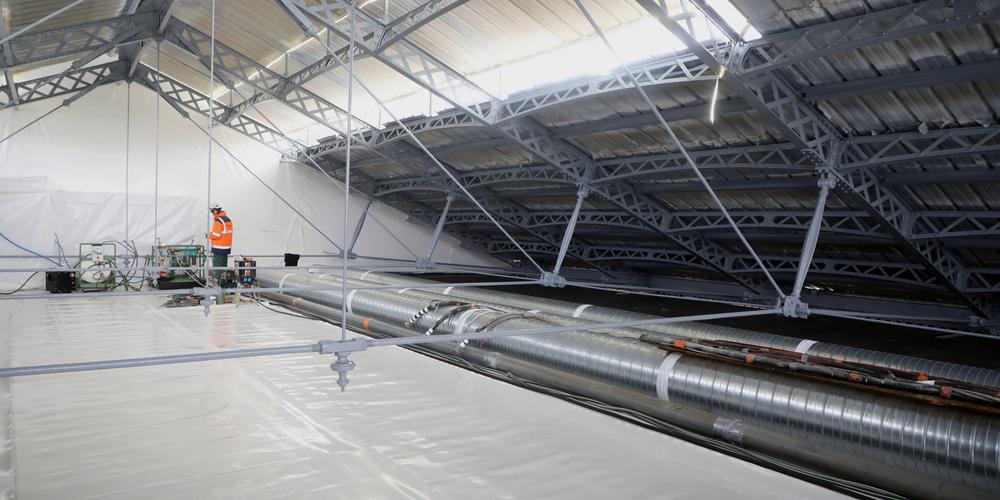
Agen marquise. The 1866 overall roof at Agen is undergoing restoration in a €9 million project, part of the national major-station rehabilitation scheme, due for completion in August. Metalwork, timber and glass is being cleaned, replaced where necessary, corrosion-treated and repainted, the glazed area increased in size to bring more natural light to the platforms. Photos: Sud Ouest.
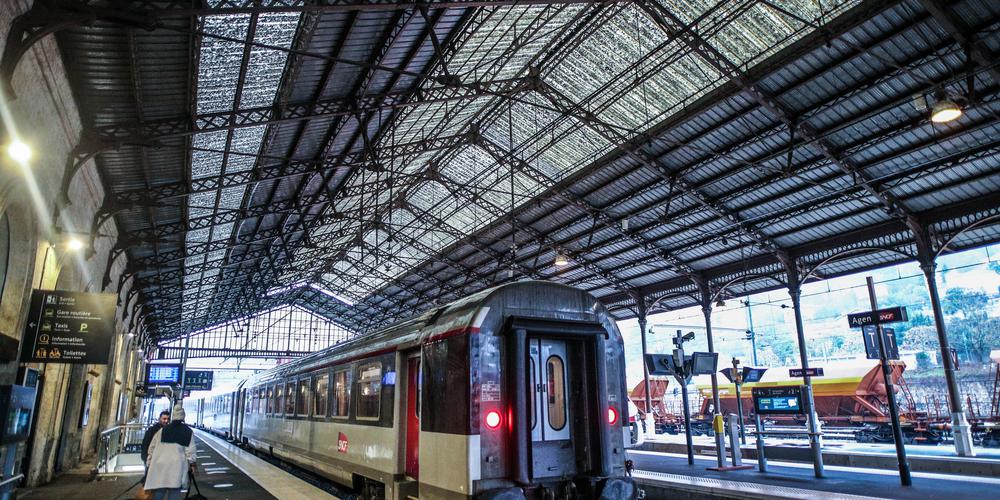
Boulogne – Etaples reopens. Following construction of a retaining wall in the cutting near Hardelot, TER services resumed progressively between Calais and Amiens on the 26th January, and TGV services from Rang-du-Fliers on the 29th. The section between Etaples and St-Pol remains closed after work was postponed due to recent flooding around Montreuil-sur-Mer. The line is not expected to open until 11th February at the earliest.
Cherbourg. Accessibility works will be carried out over several months starting in September. The €5.3 million cost will be shared between Normandie Région (55%), the State (30%) and SNCF Gares et Connexions (15%).
By request. A year-long trial of stopping on demand at three halts in Corrèze is to be made permanent, the first such arrangement in Nouvelle-Aquitaine. They are Montaignac on the Brive – Ussel line and Pérols and Jassonneix between Limoges and Ussel. None saw more than 2,000 passengers in 2022.
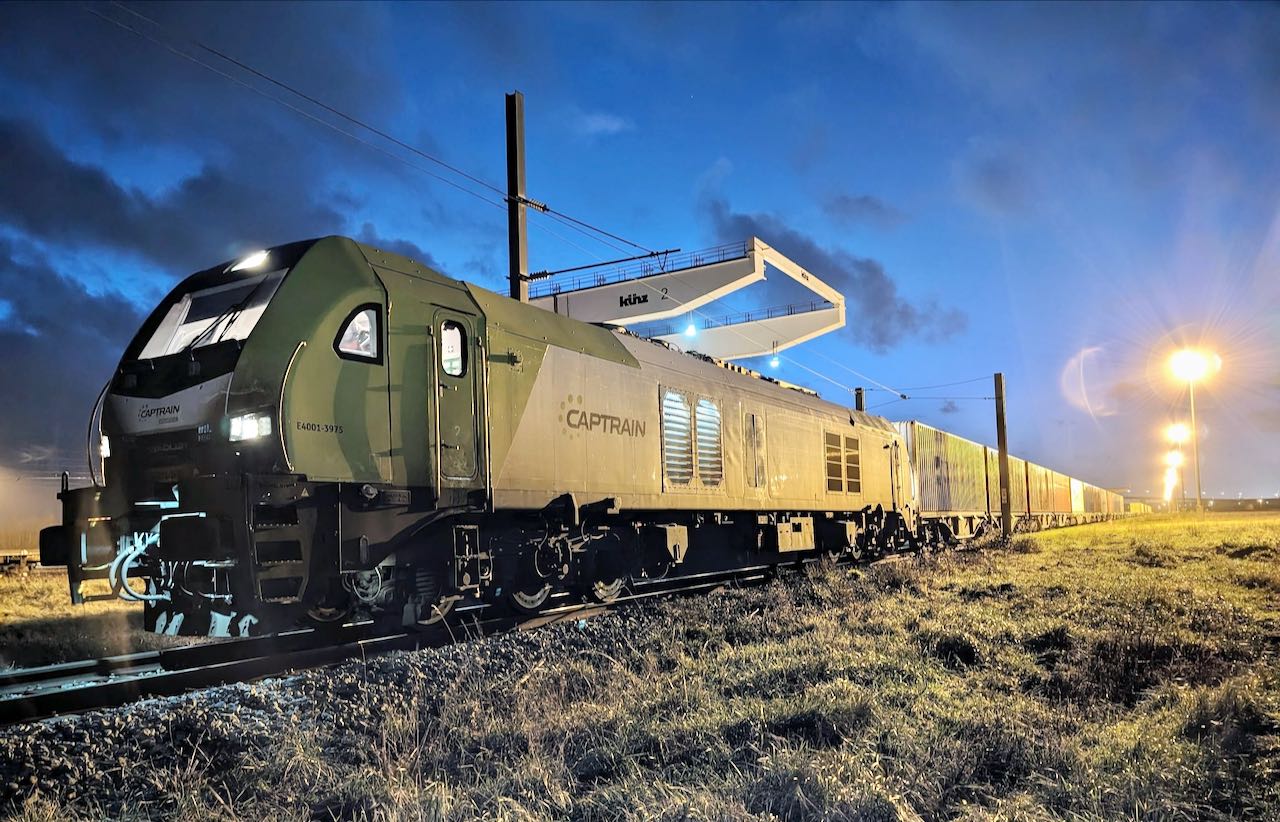
Le Havre – Clermont-Ferrand intermodal. The inaugural run of a new intermodal service between Le Havre and Clermont-Ferrand took place on 2nd January. Operated by Combronde through its railway subsidiary Ferovergne, traction is provided by Captrain which already handles Ferovergne's Le Havre – Vierzon – Bassens (Bordeaux) triangular service. The train will serve both the multimodal and maritime terminals at Le Havre and will run to a new multimodal facility in Clermont constructed on former industrial wasteland of the Michelin works. The new service will make two round trips a week, each train having capacity for 96 TEUs.
Best in class. Bretagne signed a new 10-year agreement with SNCF on 7th December for operation of its TER network, over-riding the current contract which does not expire until 2028 so as to avoid the need for competitive tendering. The région’s president Loïg Chesnais-Girard said “We have the best TER network in France”.
Pay up! Madiran and Saint-Lanne, the only communes in Hautes-Pyrénées required under new funding arrangements to contribute through their local tax towards the cost of the Bordeaux – Dax LGV, have had their appeal rejected by the Assemblée Nationale. Technically within the stipulated hour’s drive from the proposed Mont-de-Marsan TGV station, the villages rejected the suggestion that they would benefit from the LGV, pointing out that neither had any public transport connection to Mont-de-Marsan.
Shareholders march. Groups of Railcoop shareholders will march from Limoges to Lyon in stages between 17th February and 2nd March in a gesture of support for the association which is currently in administration. They will contrast State aid for the environmentally-damaging Bordeaux – Lyon air link with the lack of interest in re-establishing rail connections abandoned by SNCF. In a legal presentation in December, Railcoop gave evidence of its ability to cover future cash flow needs.
Access charges to rise. On 29th January, the Conseil d’Etat (constitutional court) ruled against the eight régions which had challenged SNCF Réseau’s TER increased access charges for 2024 to 2026. AURA, Bourgogne Franche-Comté, Centre-Val de Loire, Hauts-de-France, Île-de-France, Occitanie, Nouvelle-Aquitaine and Grand Est disputed the increases approved by the Autorité de Regulation des Transports (ART) in February 2023 at a time of high inflation. Whilst agreeing the rise, ART said that SNCF had fixed the new charges ‘in a non-transparent way and without consulting the relevant transport authorities’. As an example, for Nouvelle-Aquitaine the increases will amount to 5.3% this year (€11 million), 4.3% for 2025 and 3% in 2026.
Dijon. Buses replace trains from 10.00 until 16.00 daily between Dijon and Is-sur-Tille (33km) until 6th April whilst 14km of rail is replaced at a cost of €3.4 million. From August to December, similar work will be carried out between Dijon and Les Laumes-Alésia, affecting trains over the Blaisy-Bar incline.
Clermont reliability deadline. “This situation cannot be allowed to continue” said Minister for Ecological Transition Christophe Béchu following the latest night-long delay on the Paris – Clermont-Ferrand line. On 19th January the 18.57 from Paris broke down at Montargis. Passengers were given tray meals whilst the loco received attention; they eventually reached Clermont next morning, over 7h late, the train reported to have been without heating, power or water. On the 23rd, the minister, supported by comments from President Macron, gave SNCF 15 days to come up with “concrete and immediate measures” to remedy the line’s chronic reliability.
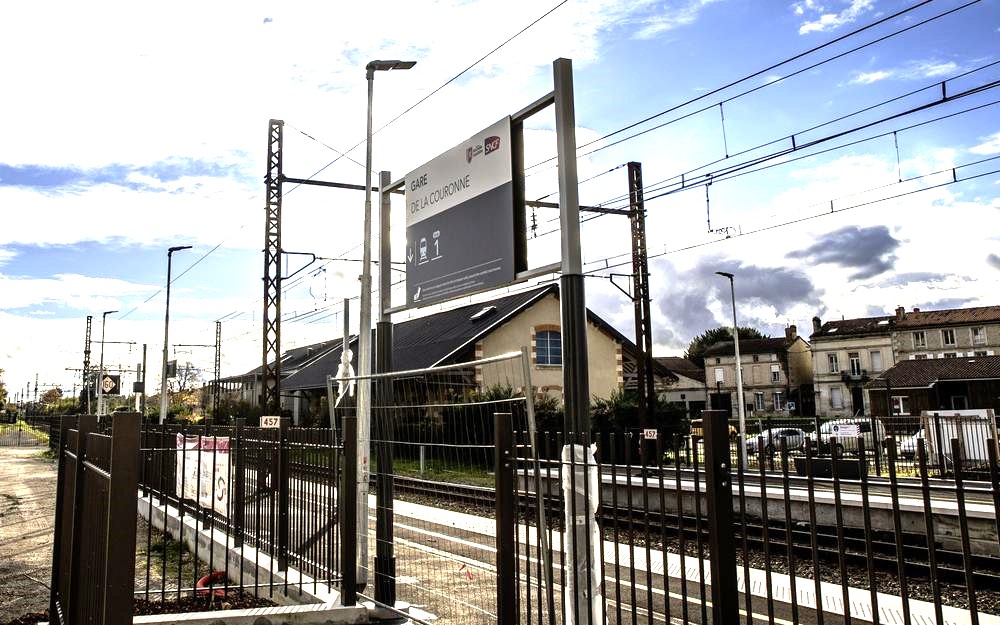
La Couronne. This halt on the Midi main line 8km south of Angoulême was reopened on 10th December at a cost of €3.3 million to serve the Sud Angoumois-La Couronne interchange with city and regional buses, car-sharing and cycle parking. Photo: Charente Libre/Renaud Joubert.
Granville. Calls locally for redoubling between Argentan and Saint-Hilaire-de-Briouze (21km) to improve reliability have been turned down. Singled in the 1990s along with most of the route thence to Granville, the track was realigned across the formation to ease curvature. According to SNCF, any advantage gained by reverting to two tracks would be vitiated by reinstatement of the former speed limits. Normandie région is reported to be considering further reduction of the remaining double-track sections.
Ardèche hopes dashed. AURA’s ten-year transport budget agreed on 15th December (see December News) failed to provide a commitment to bring back trains to the only département currently without passenger service. Extension of Occitanie’s Rhône Rive Droite service to Le Teil in Ardèche is delayed by at least two years for new studies into environmental issues and the cost of meeting new level crossing standards.
Dernier kilometre. Electric cycles will be available for short-term hire to TER passengers at 30 Pays de la Loire stations next year in a bid to reduce demand for cycle space on trains, which has grown 500% over the past 10 years. Secure bike parking will be provided free-of-charge wherever possible.
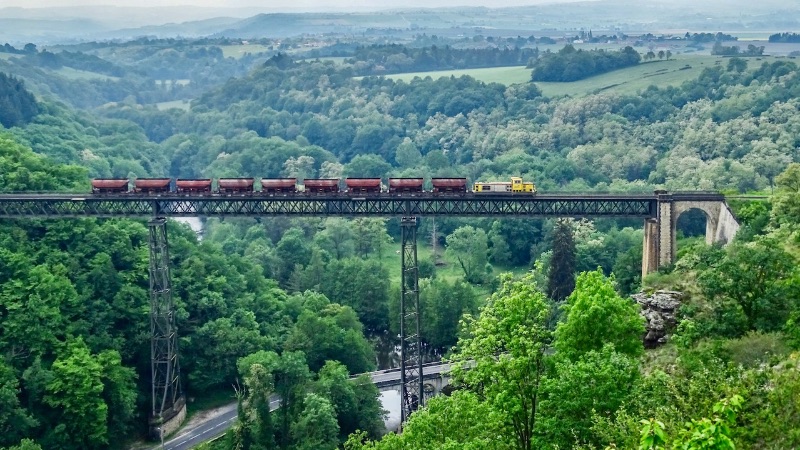
Eiffel centenary. A hundred years after his death, the engineering brilliance of Gustave Eiffel was celebrated on 27th December. In France alone, he was responsible for over 50 major railway bridges including the Garabit and Rouzat viaducts (above), dozens of smaller structures on lines he engineered, and handsome train sheds such as those at Toulouse Matabiau and Agen. A German-led application has been made for the Garabit and Viaur viaducts, and four other bridges of metal construction in Italy, Germany and Portugal, to be designated as Unesco Heritage Sites. Photo:Photauvergne/Chris D.
Nuclear waste. The disused freight line between Nançois-Tronville and Gondrecourt-le-Château (36km) in Meuse département is to be rebuilt to serve a nuclear waste recycling plant at Bure being developed by l’Agence nationale pour la gestion des déchets radioactifs (Andra). In a separate phase of the project, Andra will build a 14km link from Gondrecourt to Bure utilising part of the former line to Joinville. Work on the upgrade, costed at €120 million and funded by Andra, is unlikely to start until 2029, with opening of the waste site scheduled for 2035.
Aubrac reopened. Normal service resumed on the Ligne des Causses from 6th January (one return train ran on the 5th) after three months’ work costing €10 million to rebuild 7km of track near Ceilhes-Roqueredonde (see previous News items). Further closures for works will take place between Saint-Chély-d’Apcher and Neussargues from 4th March, and between Marvejols and Mende from 10th to 25th February and again from 3rd April.
Arkema intermodal. Industrial materials group Arkema, already using wagonload for up to 20% of its traffic, is seeking to identify flows that might be handled by intermodal. Partnering with Fret SNCF and logistics planner Everysens, Arkema’s tenders for transport service will aim for a rail or road/rail solution wherever possible.
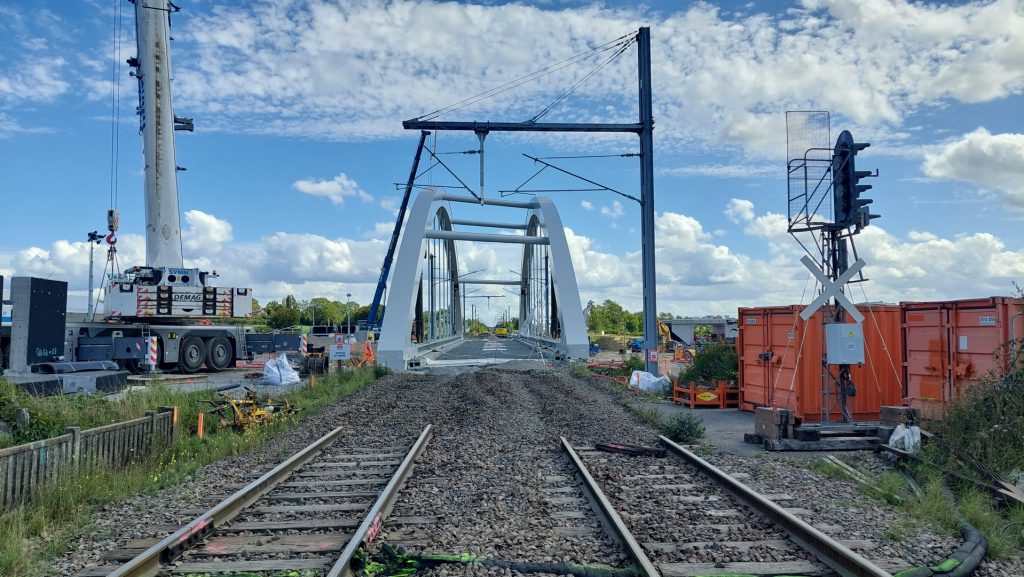
Bowstring crossing. December saw completion of a 90m bowstring bridge and associated infrastructure to carry the Lille – Hirson line over an extension of RN2 near Avesnelles in Nord département. SNCF Réseau carried out the works on behalf of the State at a cost of €31.6 million; bridge contractor was Bertold SA. Photo: Berthold SA.
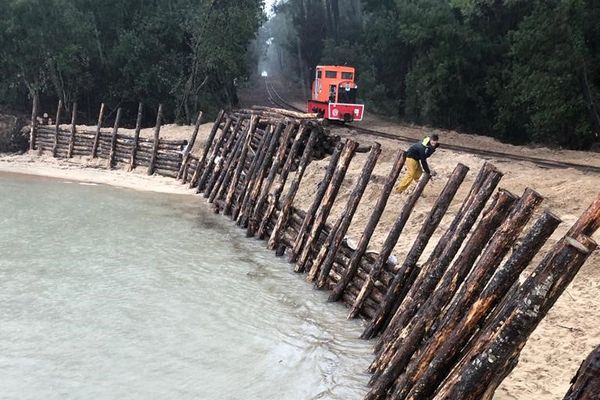
Saint-Trojan saved. Charente-Maritime département has financed remedial work at the P’tit Train de Saint-Trojan on the Île-de-Oléron, where infrastructure was endangered in December by high seas and severe weather. The railway’s infrastructure manager, François Bargain, had been threatened with legal action for carrying out urgent repairs without authorisation, necessary he said because his pleas for approval had gone unanswered. Now, the line’s 2024 season can go ahead as planned. Photo: François Bargain.
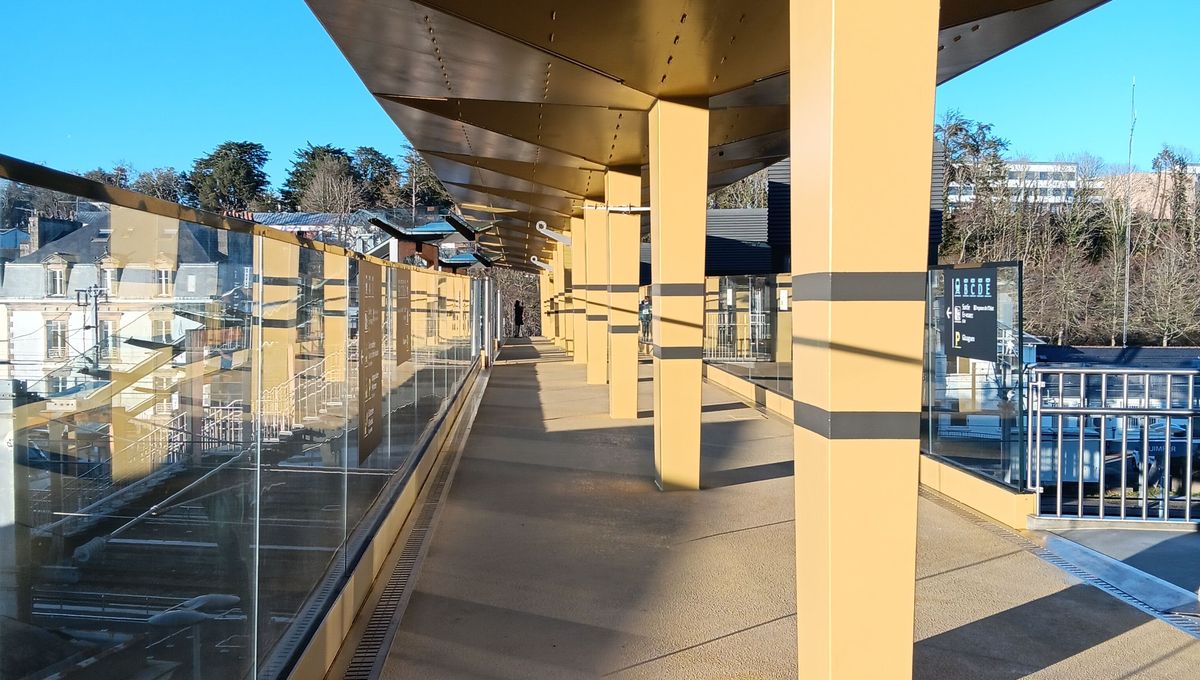
Photo: © Radio France/Thomas Biet.
TGV M delay. Entry into service of TGV M looks like being further delayed, possibly until the end of 2025, by supply chain problems at Alstom. In particular, BFMBusiness reports difficulties with the back-up power system being supplied by SAFT.
Eurotunnel plans next 30 years
At an event held on 14th December at Eurotunnel's headquarters at Coquelles to celebrate the forthcoming 30th anniversary of the Channel Tunnel, plans for the next 30 years were unveiled. The key ambition will be to double traffic through the Tunnel over the next 10 years. Recently Eurotunnel's owner Getlink has been working with manufacturers and the EU Agency for Railways, Établissement Public de la Sécurité Ferroviaire in France and the UK Office of Rail & Road, to simplify the standards required for future rolling stock using the Tunnel. The requirement for passenger trains to be long enough to always be adjacent to one of the Tunnel cross-passages that are spaced at every 350m has already been dropped.
These changes are expected to halve the time for introduction of new operators’ services from inception to commencement to five years including acquisition of new rolling stock. In recent months a number of operators have unveiled plans to both compete with the existing Eurostar services and introduce new destinations such as Geneva, Cologne and Zurich. In January, DB said that operating through the Channel Tunnel was still ‘of fundamental interest’ despite its failed attempt dating back to 2013.
To provide financial support for development of new services, Eurotunnel has introduced Etica (Eurotunnel Incentive for Capacity Additions). This contributed €9 million towards Eurostar's new London – Amsterdam service and Eurotunnel expects it to increase to €23 million in 2025-30.
There are currently about 400 workings a day through the Tunnel, mainly LeShuttle freight and passenger trains. While there is already plenty of spare capacity, introduction of ETCS in 2030-32 could provide capacity for up to 1,000 workings a day. Discussions are also taking place to expand capacity at St Pancras for both trains and passengers.
There are currently about 400 workings a day through the Tunnel, mainly LeShuttle freight and passenger trains. While there is already plenty of spare capacity, introduction of ETCS in 2030-32 could provide capacity for up to 1,000 workings a day. Discussions are also taking place to expand capacity at St Pancras for both trains and passengers.
On the freight side, loading-gauge clearance through Kent remains the major obstacle to operating more services from mainland Europe to the UK, as operators are reluctant to risk penalties for breakdowns on HS1. Eurotunnel is currently handling about four freight workings a day, equivalent to 1 million tonnes annually, most of which travel to Barking via HS1. This is one-tenth of the annual tonnage projected prior to opening of the Tunnel. With the British logistics industry primarily located north of London, access to Wembley and Daventry is essential. Network Rail estimates that investment of over £600 million is required to include diversionary routes. This is in sharp contrast to work undertaken by independent consultants in 2022 who reported that a single route through Kent, capable of taking W12 gauge 'high cube' containers, could be modified for £42 million, offering a very high return on the investment.
MTVS tracklaying continues
Despite the theft of 2 tonnes of fishplates and other track components valued at €400 from its base at Crèvecoeur-le-Grand, Musée des Tramways à Vapeur et de chemins de fer Secondaires Français (MTVS) volunteers have used temporary fixings to lay and align 500m of track from Rotangy towards Regnonval on the extension to Saint-Omer-en-Chaussée.
A source of fishplates for 46kg/m rail has been identified on disused SNCF track but permission is needed from SNCF Réseau to recover them. MTVS expects tracklaying to reach Regnonval this month. Further work is planned to take the track close to the Blicourt road crossing that will be completed by the end of the year or in 2025. Photos: Olivier Janneau.
A source of fishplates for 46kg/m rail has been identified on disused SNCF track but permission is needed from SNCF Réseau to recover them. MTVS expects tracklaying to reach Regnonval this month. Further work is planned to take the track close to the Blicourt road crossing that will be completed by the end of the year or in 2025. Photos: Olivier Janneau.
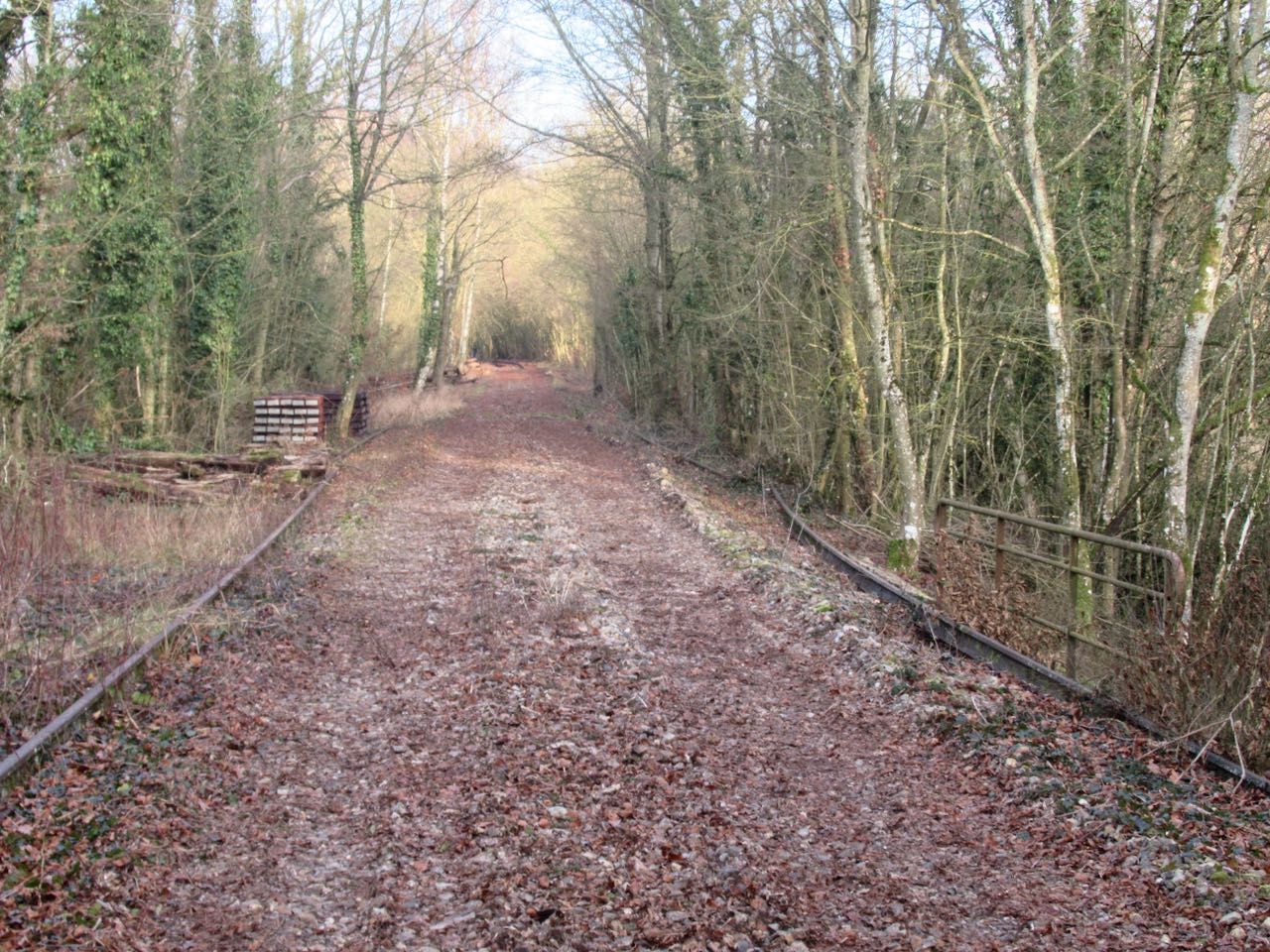

Troyes – Saint Florentin Velorail
Work is underway to develop a velorail and help preserve part of Troyes – Saint Florentin Line 26. The l’association de sauvegarde de la Ligne 26 (ASL26) plans to restore 10km of track between Jeugny and Auxon (Aube) and open as a velorail in 2025. Trains last ran in 1997 and the line was decommissioned by SNCF Réseau in January 2023. Since then 100 volunteers have made considerable progress in clearing the track. Work is now in hand to obtain the necessary safety authorisations. The operation would be based around the former station at Saint-Phal-Chamoy that has been bought by the community of communes of Chaourçois and Val d’Armance.
Albret voie verte
Chemin de fer Touristique du Pays d’Albret in Lot-et-Garonne is threatened by plans to convert parts of the Port-Sainte-Marie – Nérac – Mezin/Riscle lines, disused since 2008, into a voie verte. Albret Communauté has a 30-year lease on the Feugarolles – Moncrabeau section (27km), where tracklifting was scheduled to start in January
Opposite. 030 TU 46 at Nérac in August 2019. Formerly Jugoslavian then Serbian JZ 62-046. Porter 7584/1973. Believed to have been steamed in the summer 2019, it is still in need of some work before becoming operational. Photo: Georges. Turpin.
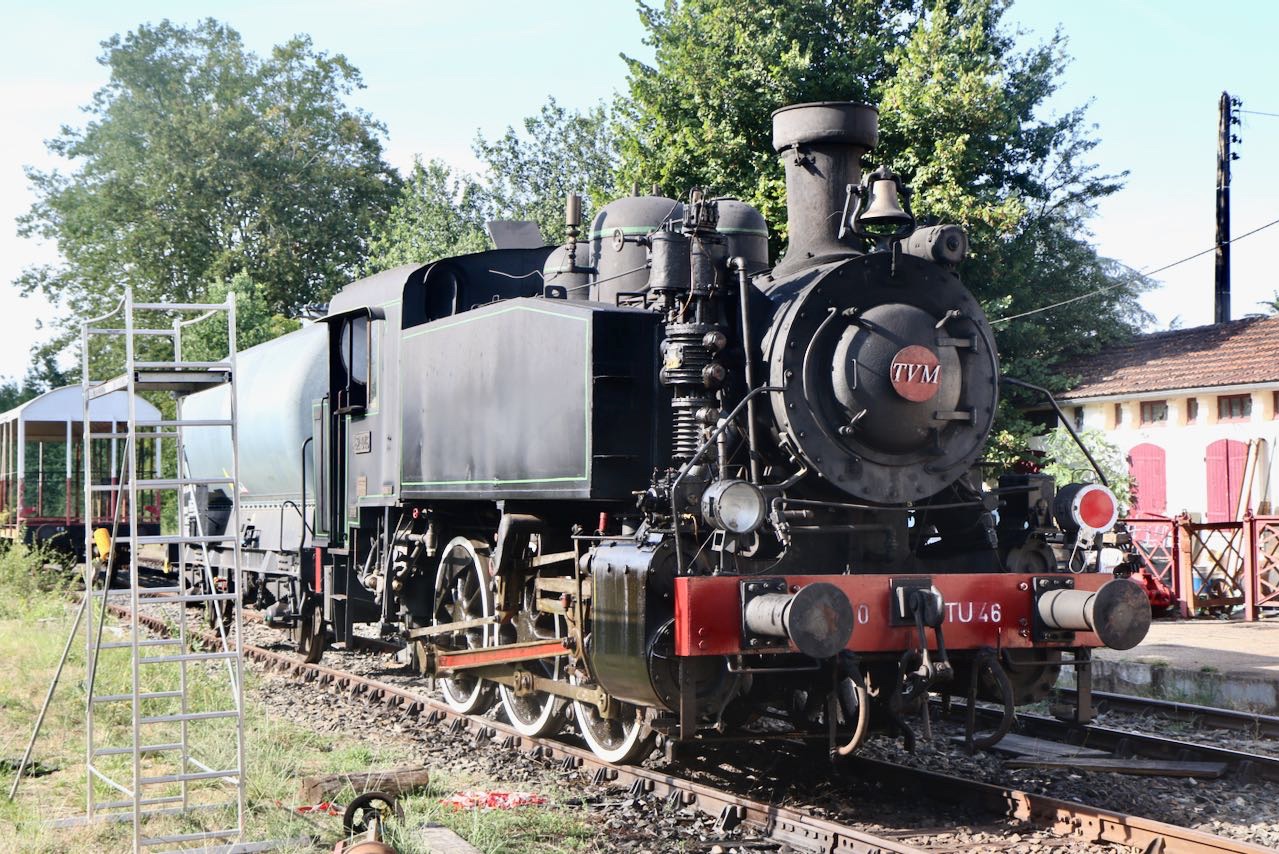
Turning back the clock
Steam continued from Calais and Boulogne depots for another couple of years on relief, secondary and freight services, but the principal trains were taken over by pairs of BB 66000 from Calais and A1A A1A 68000 from Boulogne. With neither class having train heating, boiler vans were used during the winter months. These locos were soon replaced by CC 72000s and from the end of 1974 by Longueau BB 67400s, an association with the line that would last until 2019.
Photo : Georges Turpin.
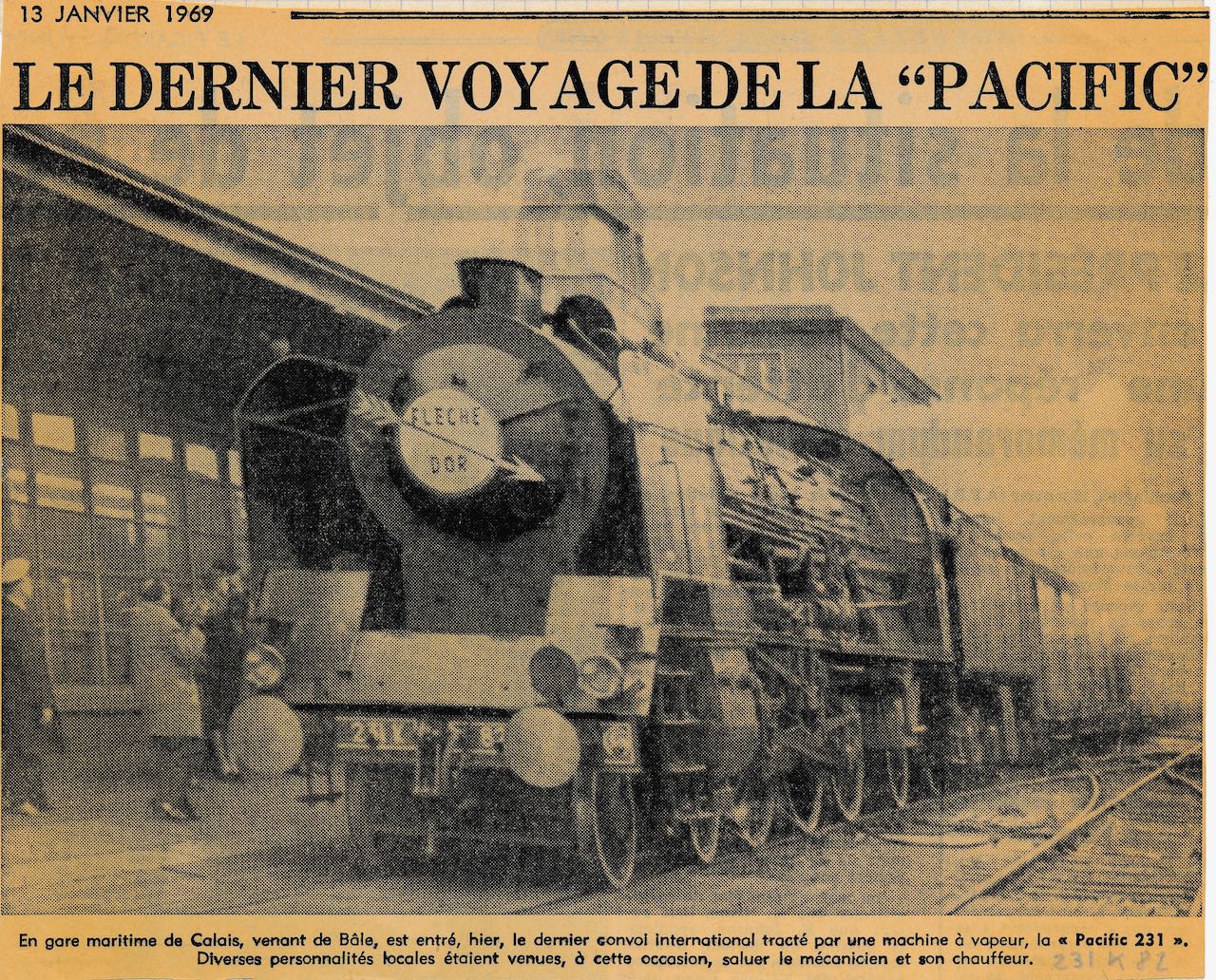
Urban Rail
Paris Metro Line 11 extended
The 5.4km extension of Line 11 from Mairie-des-Lilas to Rosny-Bois-Perrier is nearing completion for opening shortly, bringing much faster journey times to central Paris from this part of Seine-Saint-Denis. Rosny-Bois-Perrier to Châtelet will be just 25min on Line 11, against around 50min by current routes.
There are six new stations including Côteaux-Beauclair dramatically-situated on a 580m viaduct section near the end of the line. Existing stations have been refreshed, cleaned and new lighting installed; 39 five-car MP14 trains are replacing the old fleet of four-car MP59s now over 60 years old to provide greater capacity and a more frequent service. Due to late delivery of MP14 sets from Alstom, six MP59s have been retained, fitted with windscreen wipers for running on the new open-air section.
Beyond the terminus at Rosny-Bois-Perrier a depot has been built to accommodate the new trains, replacing outdated facilities at Lilas. There is interchange with T1 at Place Carnot and with RER Line E and the future GPE Line 15 Est at Rosny-Bois-Perrier.
Above. Trial running at Côteaux-Beauclair; the station serves the Domus centre commercial and parc de Guillaumes. Photo: Bertrand Guigou.
Opposite. Cinderella no longer, Line 11’s dowdy stations have been refurbished. MP14 train at Hôtel de Ville on 1st December. Photo: Chris Bushell.
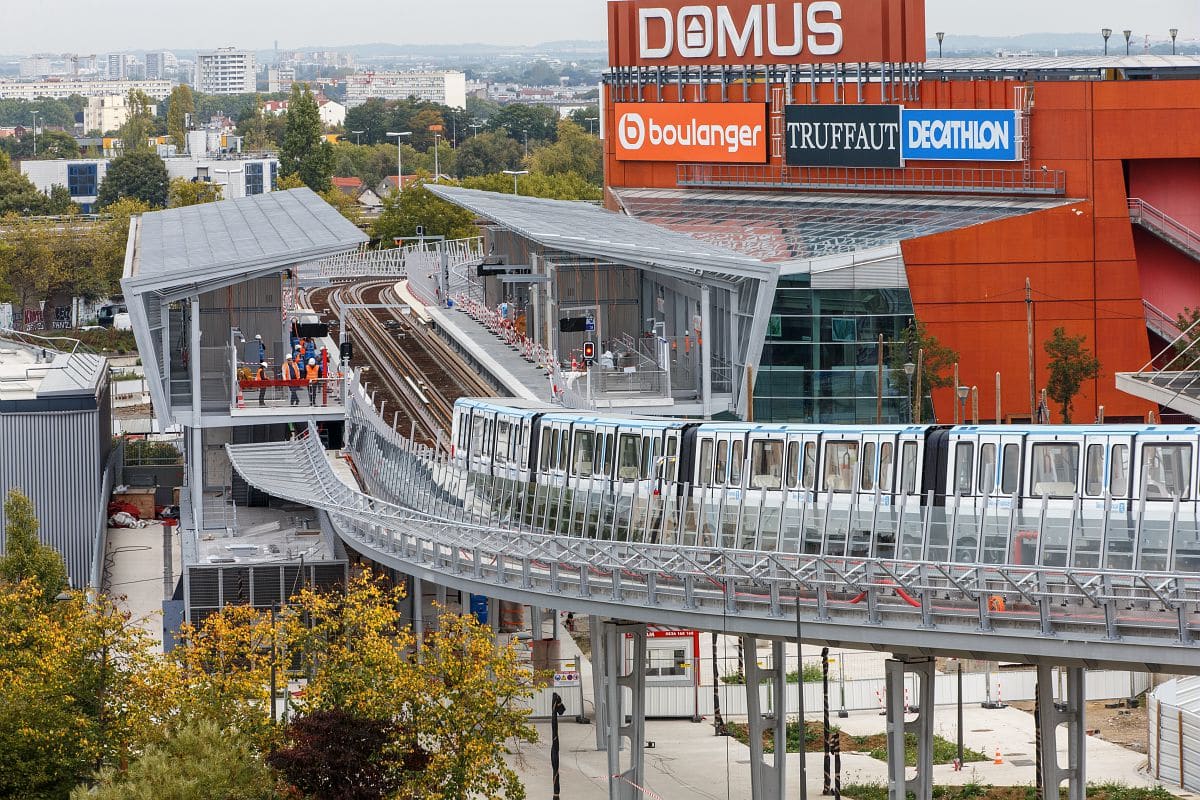
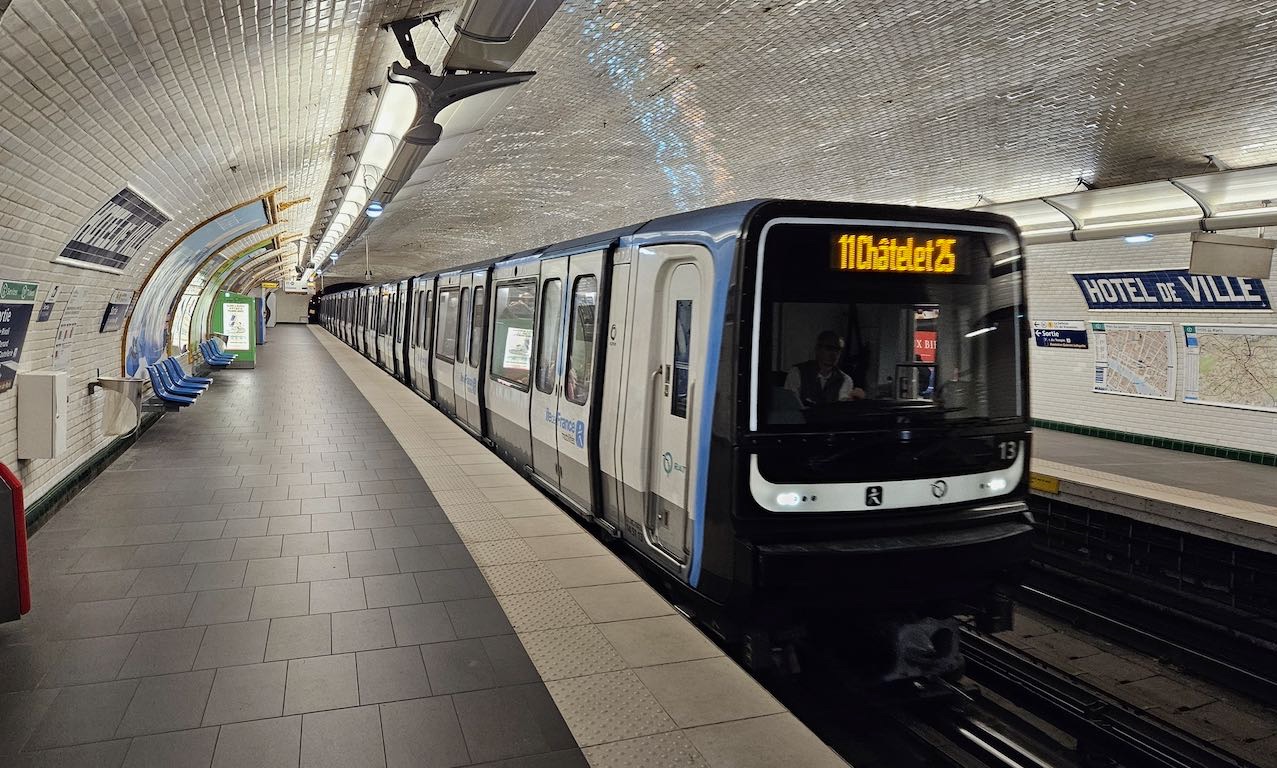
GPE progress

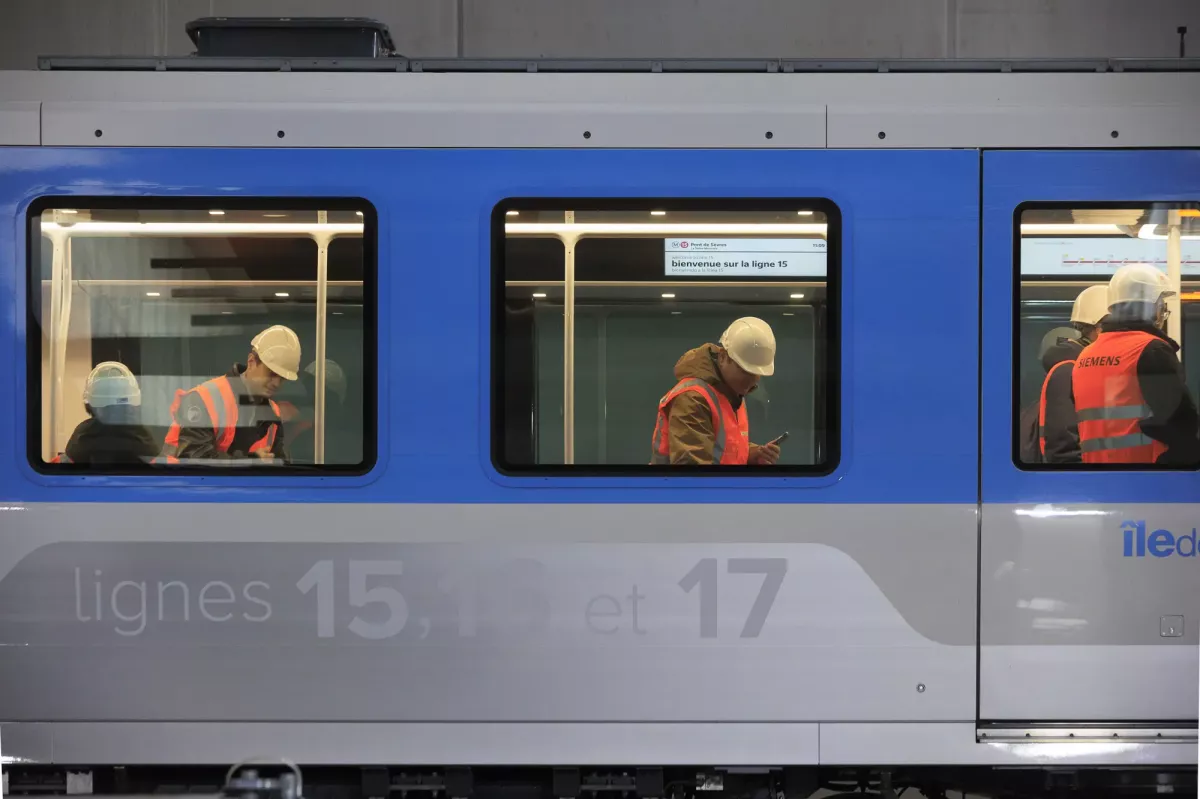
Tracklaying is underway on the longest viaduct in France, the 6.7km elevated section of Grand Paris Express Line 18 between Saint-Aubin and Palaiseau. Resting on 200 columns between 6.5 and 30m high, the viaduct has substantial acoustic barriers and rubber railpads to reduce noise nuisance. Third-rail electrification is being installed to avoid the visual intrusion of OHL and the possibility of damage in severe weather.
To the east boring has been completed of the 12km from Palaiseau to Aéroport d’Orly, due to open in 2026-27. The remaining 16km westwards to Versailles-Chantier will open in 2030.
The Corea consortium headed by Eiffage will build and fit-out the 17km section of GPE Line 15 between Bobigny-Pablo Picasso and Champigny-Centre (six stations), due to open in 2031, under a contract valued at €2.5 billion awarded on 15th December. This is the third Line 15 construction contract and Eiffage’s 36th for GPE works.
28th November saw Alstom’s prototype six-car Metropolis MR6V train run for the first time in manual mode on a 2km section of Line 15 Sud.
Photo right: actu Essonne/Thibaut Faussabry. Photo left: Société du Grand Paris.
Paris Line 4 extension. Studies for a 7km southwards extension of Line 4 from Bagneux-Lucie Aubrac to Châtenay-Malabry (T10 interchange) have been authorised in the Hauts-de-Seine and Essonne Contract-Plans approved on 20th December. The alignment would share part of the RER Line B branch to Robinson.
Poor start for T12. Within weeks of opening, Paris’s T12 was getting a bad press as advertised service levels were affected by late delivery of the cars and shortage of drivers. The last of the 25 tram-trains should arrive from Alstom this month, but there are only 30 drivers against the 55 required to run every 10min in peak hours. Operator Transkeo promised a full service ‘in the spring’.
Poor start for T12. Within weeks of opening, Paris’s T12 was getting a bad press as advertised service levels were affected by late delivery of the cars and shortage of drivers. The last of the 25 tram-trains should arrive from Alstom this month, but there are only 30 drivers against the 55 required to run every 10min in peak hours. Operator Transkeo promised a full service ‘in the spring’.
Pécresse demands 100%. President of Île-de-France Mobilités Valérie Pécresse met with transport operators on 16th January to seek a rapid return to 100% reliability (considered impossible by several of them). Tram, metro and RER services have been affected by driver shortages and maintenance backlogs. If service on RER Line B did not improve, she threatened to create a new operating company to take over from SNCF/RATP. At the same time, she announced that the Olympic Games would be ‘100% accessible by public transport’.
Toulouse Metro Progress

Construction of the 2.7km Line B extension from Ramonville to Labège Madron, almost entirely on viaduct, reached the Toulouse périphérique in November. With 12 traffic lanes to cross as well as a lake, a stream and a cycle track, prefabricated concrete sections 100m long weighing 578 tonnes were rolled into position in a series of two-night road closures during December. Work continues elsewhere on erection of viaduct supports, currently concentrated on the Carrefour supermarket carpark at Labège close to the terminal station and future interchange with Line C.
The 250m twin-bore tunnel section will pass beneath the Canal du Midi at Ramonville, where stabilisation work including cement injection was carried out during the canal’s normal winter closure period. The boring machine for this contract, named Clémence Isaure, had worked on construction of Line B 20 years ago. It was moved from the Bessac factory at Saint-Jory to Ramonville over two nights 24/26th January, spending the day parked-up at Ribaute (see photos), prior to start of tunnelling next month. The entire alignment should be completed by the end of this year, after which work will begin on the two new stations, Parc Technologique du Canal (tram interchange) and Labège Madron, close to the Institut National Polytechnique. Opening is scheduled for late 2027.


Meanwhile, contractor Eiffage is reconditioning and adapting to Line C profile three Herrenknecht tunnel boring machines previously used on Grand Paris Express Line 16. Named Sarah, Bantan and Armelle, the 1,650 tonne machines have had their cutters reduced in diameter from 9.87m to 9.67m and their service vehicles lengthened from four to five sections. Later this year, they will start work on Eiffage’s tunnelling contracts for Lots 1 and 2 at the western end of Line C, totalling 8.4km.
Photos above: Tisseo.
Photos below: ©Pyrros.fr
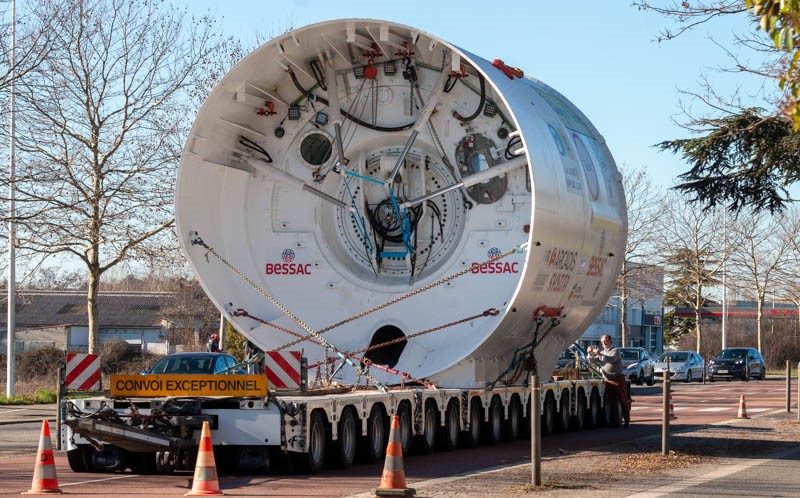
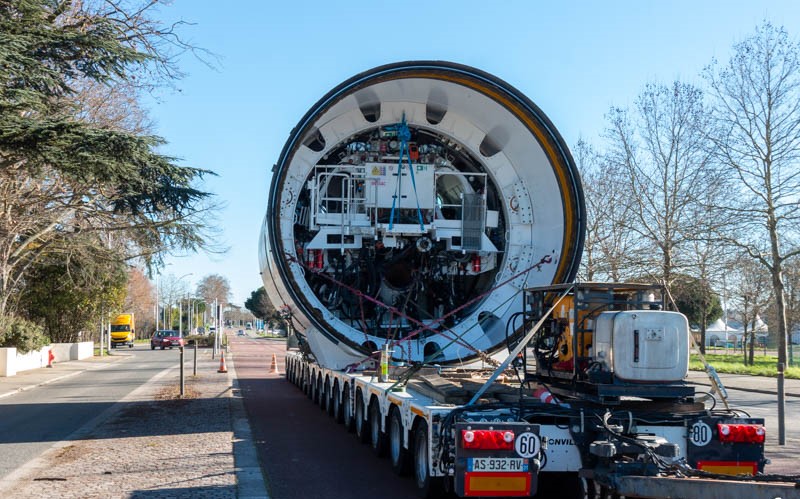
What’s wrong in Rennes?
At a press conference on 9th January, representatives of Keolis, Siemens and Rennes métropole gave the first indications of what had caused this second breakdown of the CityVal automated system, whilst insisting that passengers had never been in any danger. Investigations had uncovered a faulty or worn component necessitating rebuilding or replacement of 100 bogies (4 x 25 cars), though Siemens would not reveal precisely which component was involved or the extent of the damage. Surprise was expressed that any part would have worn out after only 200,000km of service.
With the scale of remedial work necessary, late March was given as the earliest possible date for resuming service, but Siemens said that further investigations remained to be carried out. Also, it revealed that the cause of November’s breakdown, although fixed, was still not fully understood.
Line B’s 80,000 daily passengers are once again overwhelming the city’s hard-pressed buses. A reorganisation of the replacement network is proposed for implementation this month. Pass holders will receive a 50% discount during the period of closure.
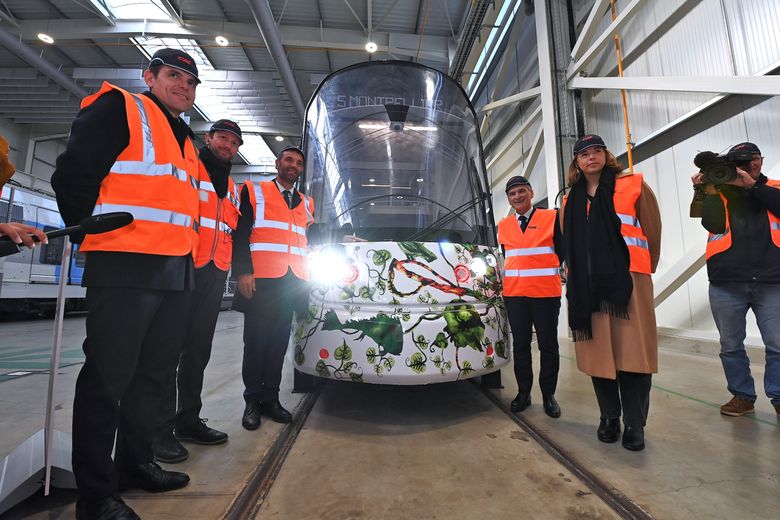
CAF Bagnères. Work has started on CAF’s order for 77 tramcars for Montpellier following arrival of the first bodyshell from Spain on 15th December. Director general Alain Picard confirmed a further €5 million investment in expanding the site by 2025, while highlighting the difficulty of recruiting 80 additional personnel necessary to fulfil the order on time. Photo: La Dépêche du Midi/Bastien Arberet.

Baffled at Montparnasse. Since 17th November the main entrance to metro Lines 4, 6, 12 and 13 used by 55,000 passengers daily has been unrestricted whilst RATP refurbishes the concourse to ease queues for the ticket machines prior to installing new barriers. Signs invite passengers to validate tickets or touch-in using eight small wall-mounted readers but these are easily missed in the crowd; many riders have been caught out though inspectors have been using their ‘discretion’. Photo: actuParis/JB.
Bordeaux – Lacanau to reopen? The Métropole has instructed consultants to study construction of a link between Bordeaux and the seaside resort of Lacanau (60km), a line that closed to passengers in 1954 and freight in 1978. While rebuilding a conventional electrified line is considered too expensive, the study will consider a tram-train option. This would see the new railway run from tramway Line D terminus at Eysines Cantinolle following departmental roads (RD 1215 and RD 6) as closely as possible to Lacanau-Océan.
© Peter Lovell & Chris Bushell. The French Railways Society 2023. With thanks to Georges Turpin and Olivier Janneau
